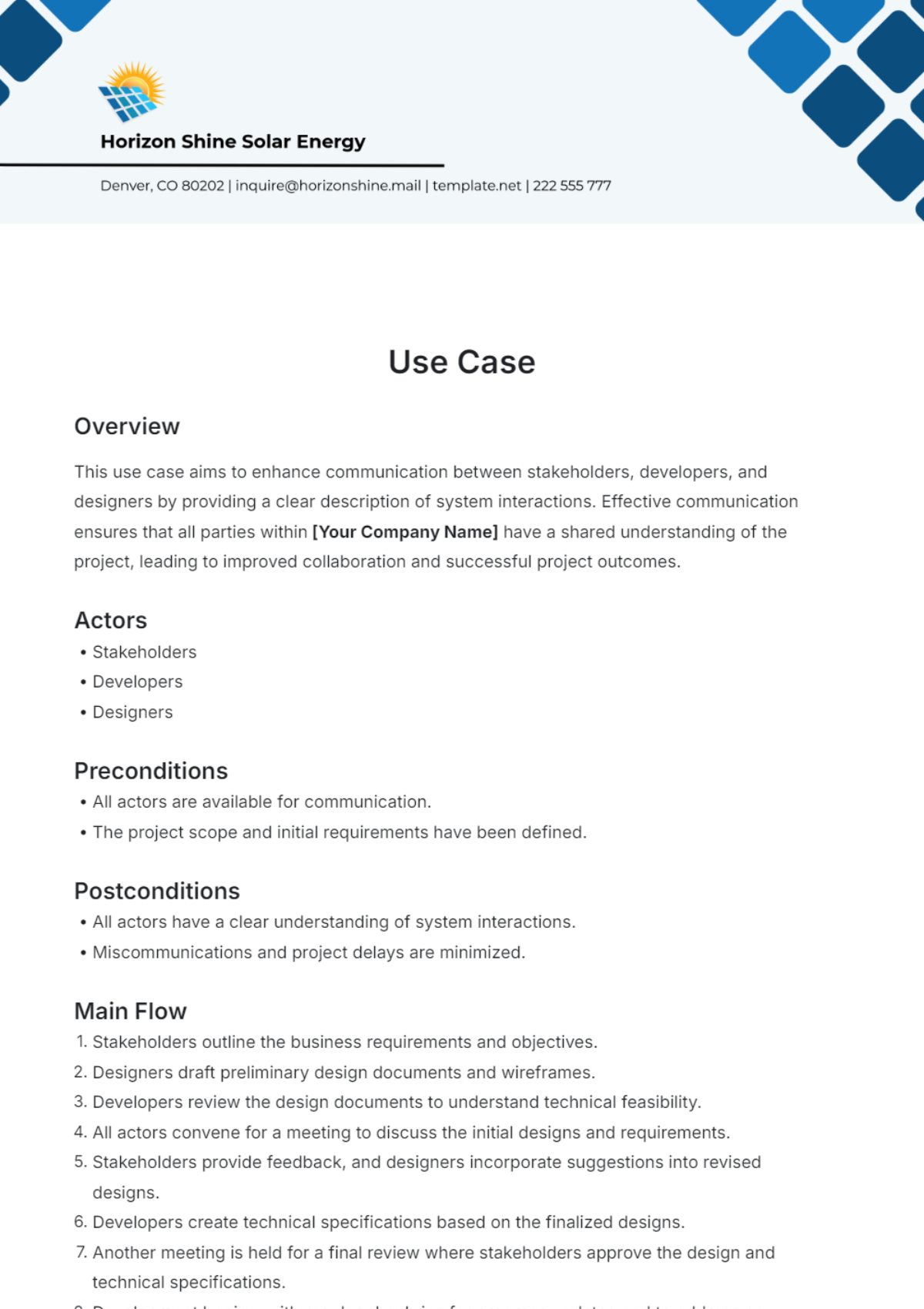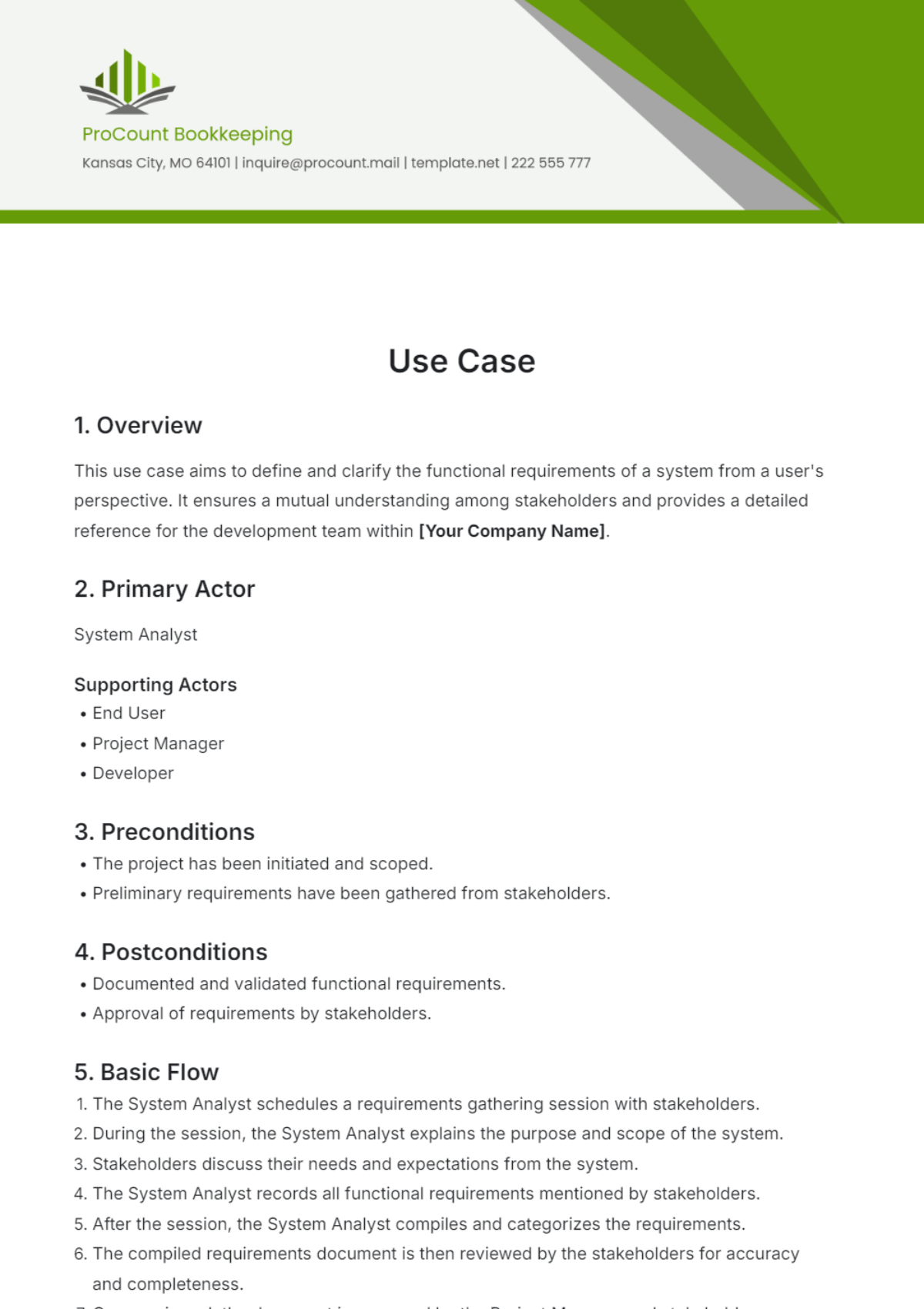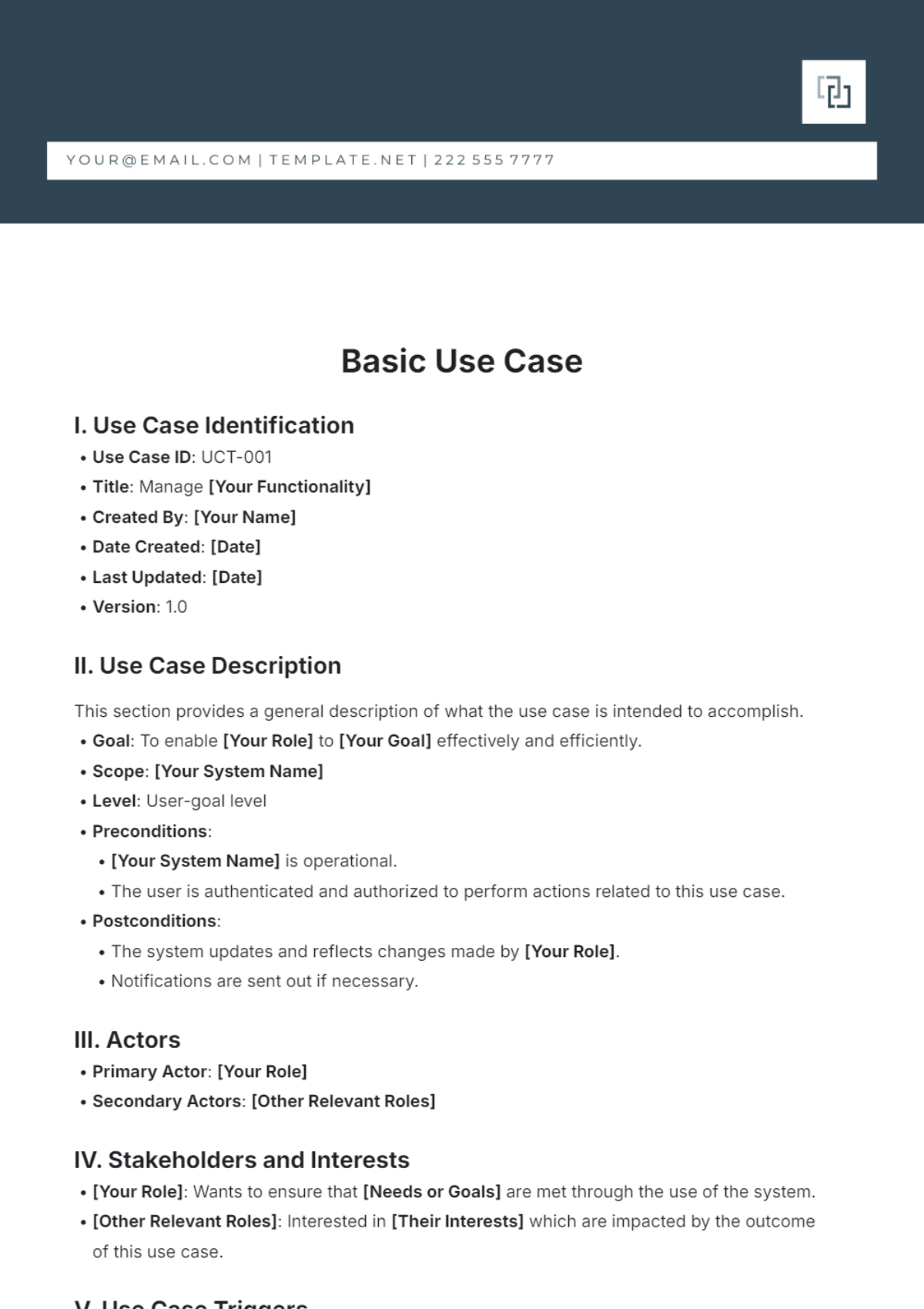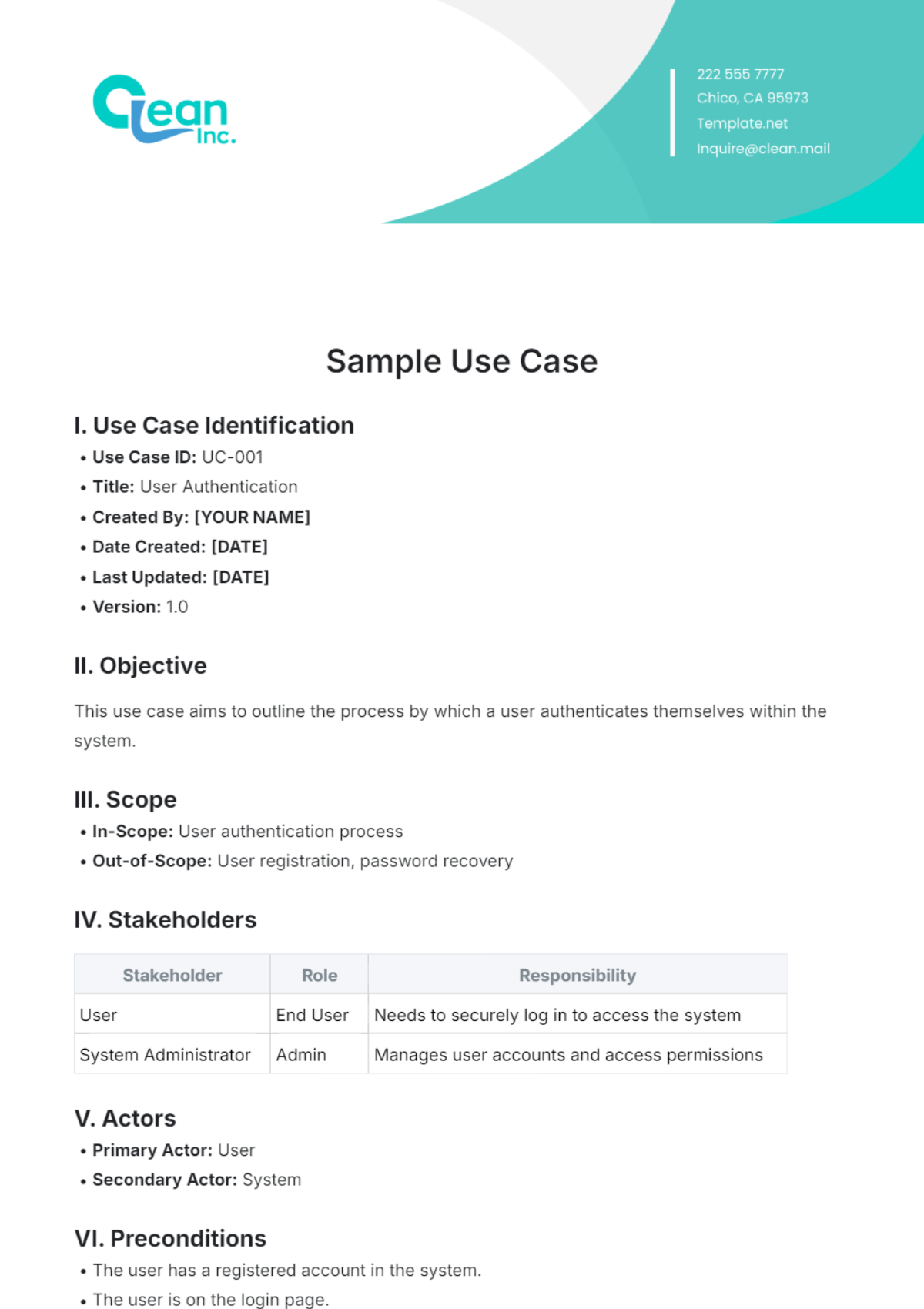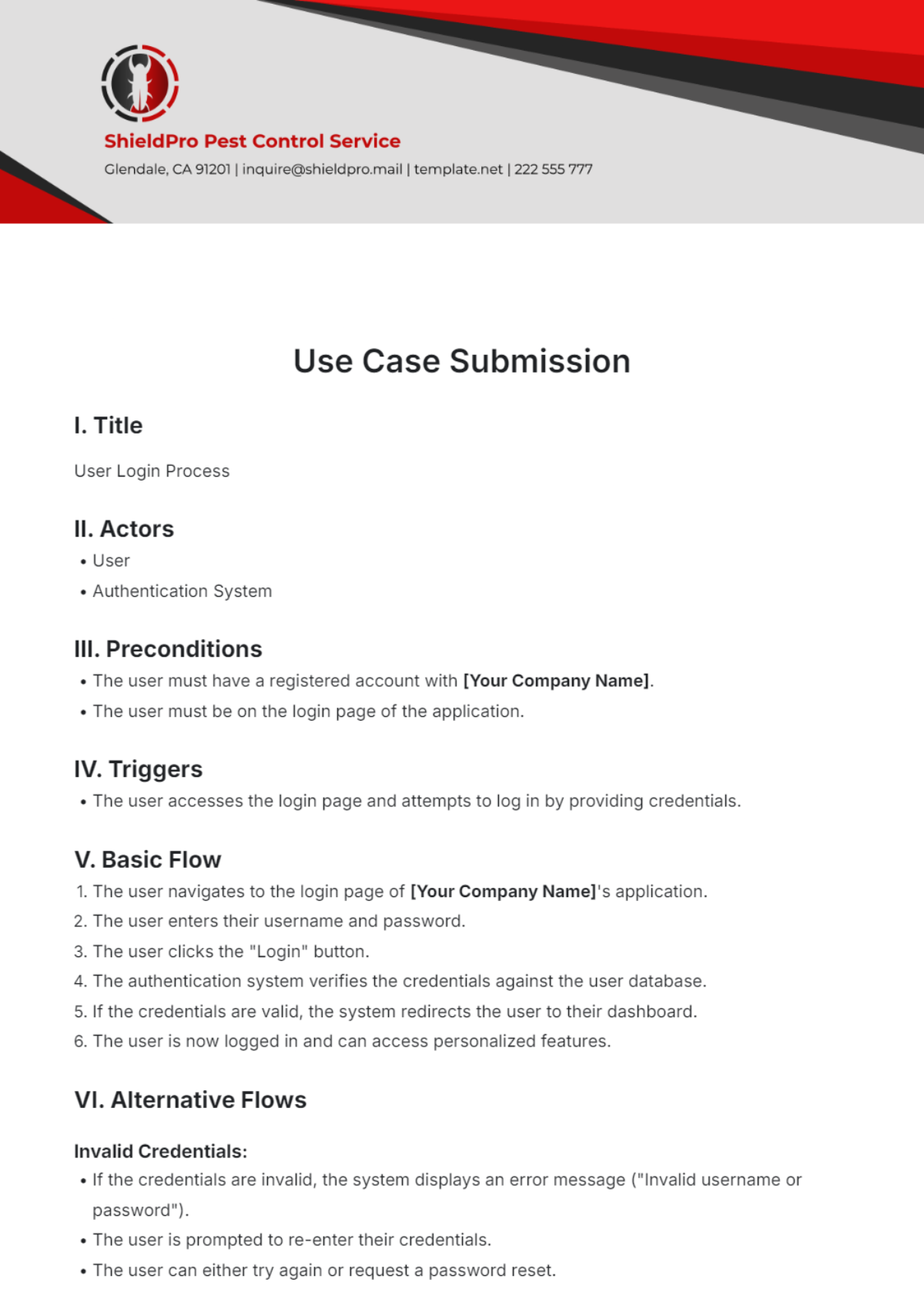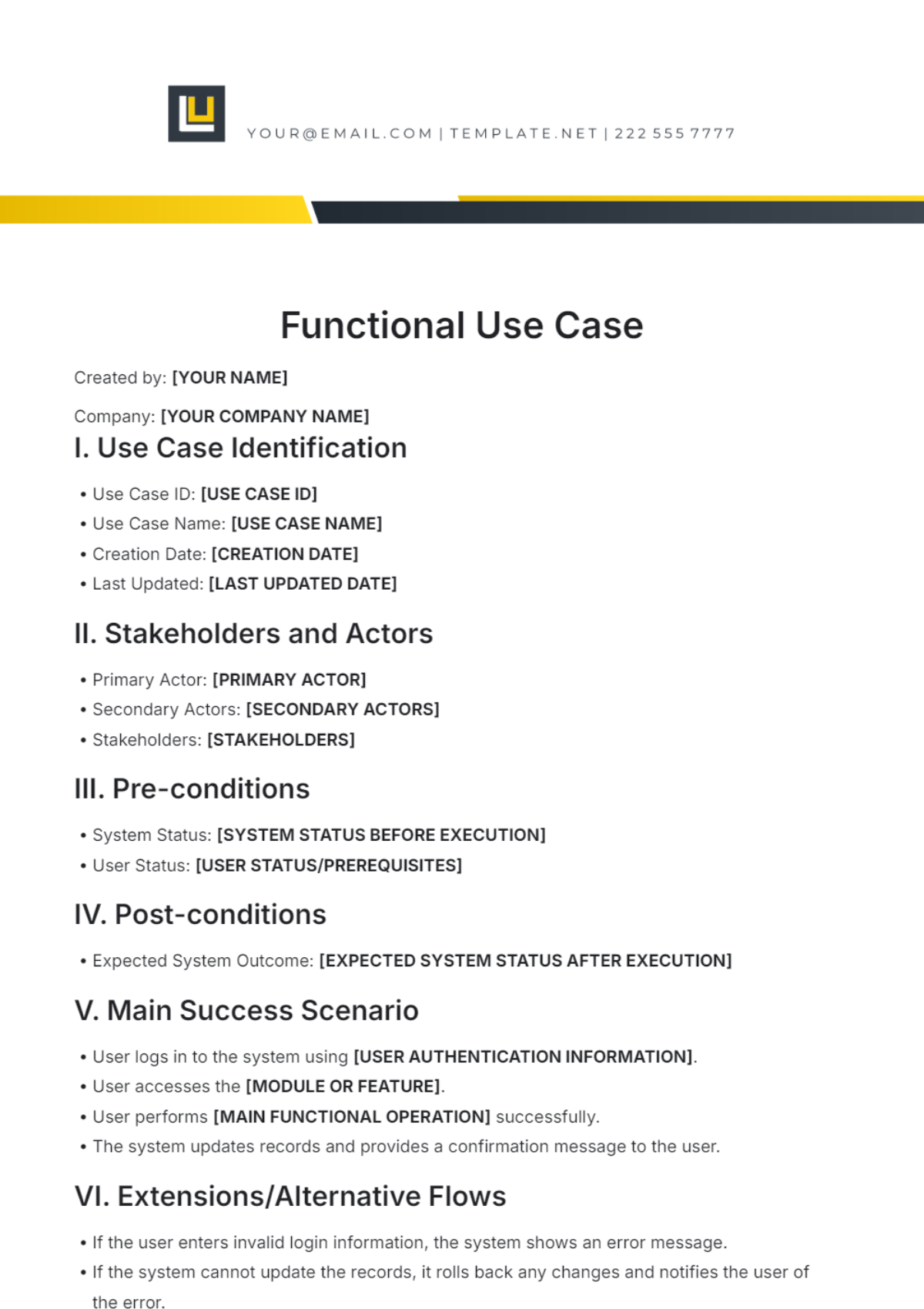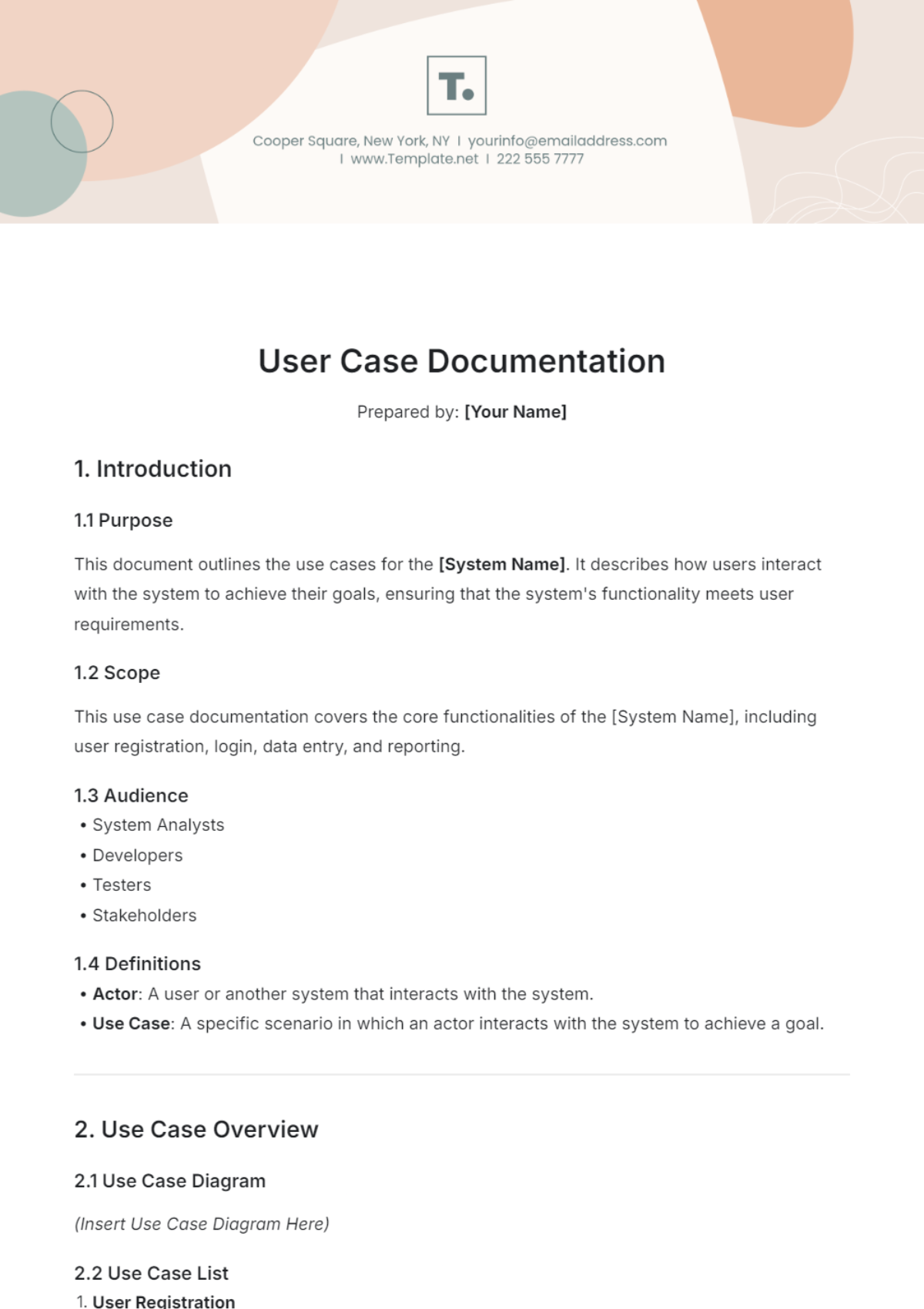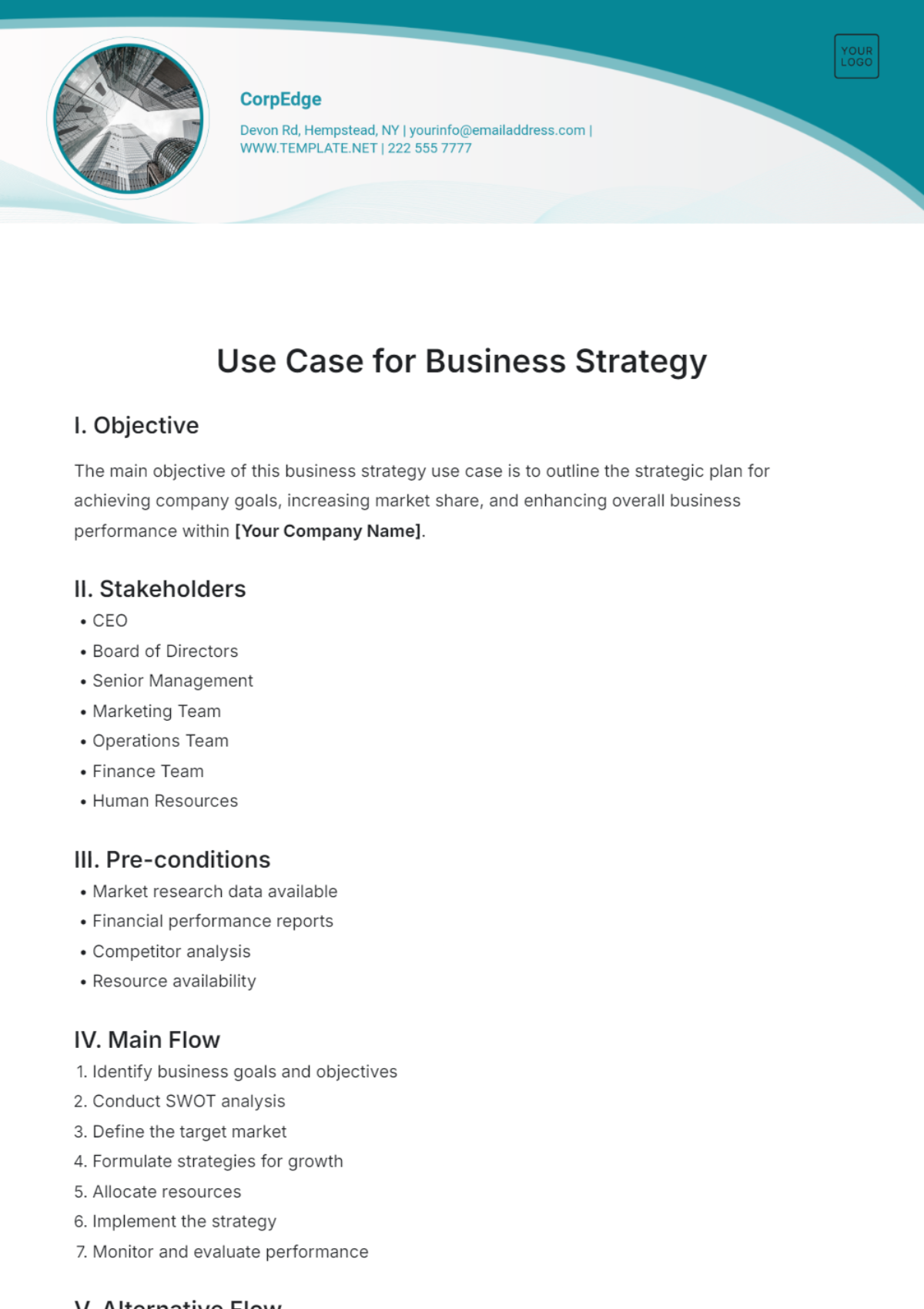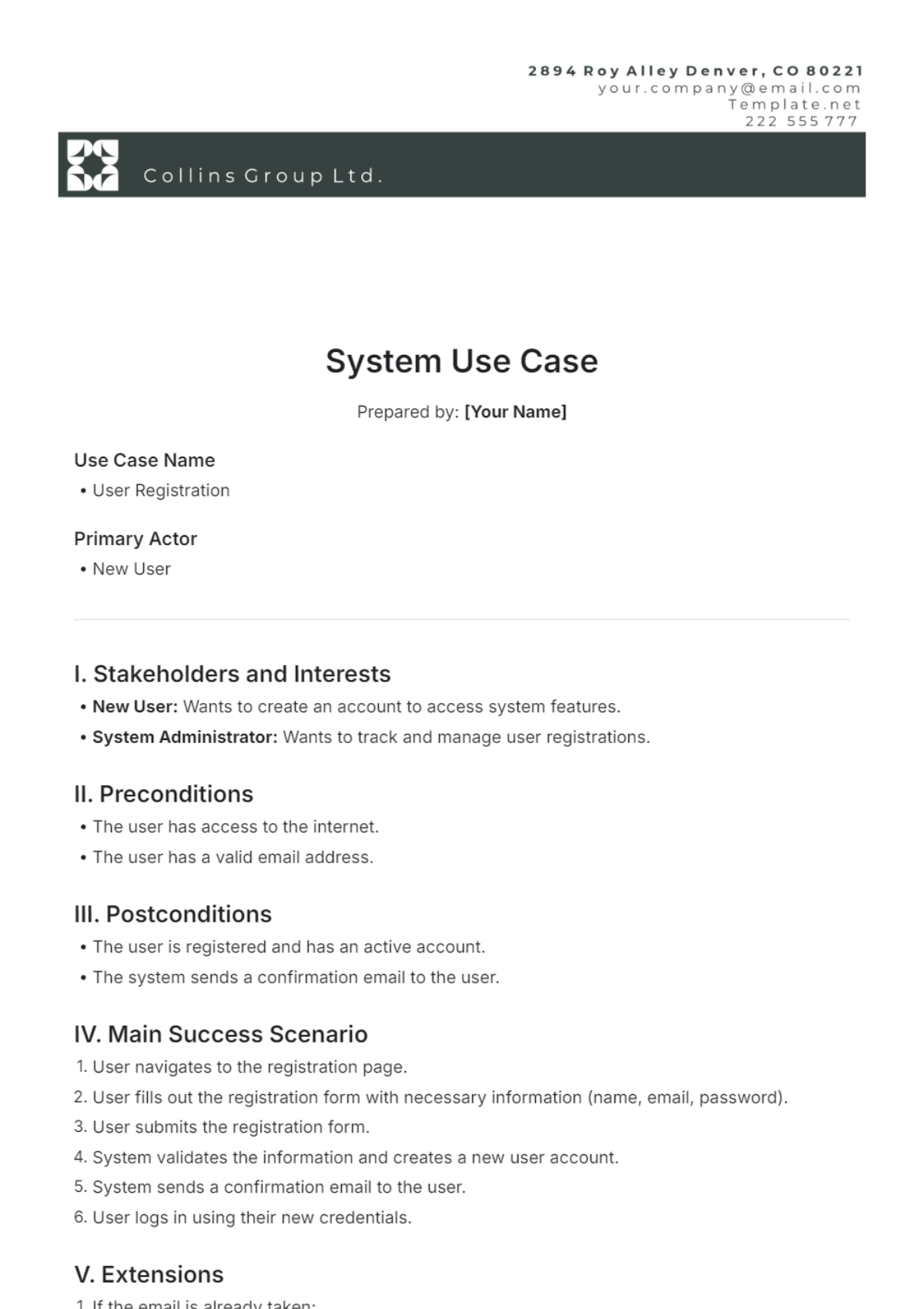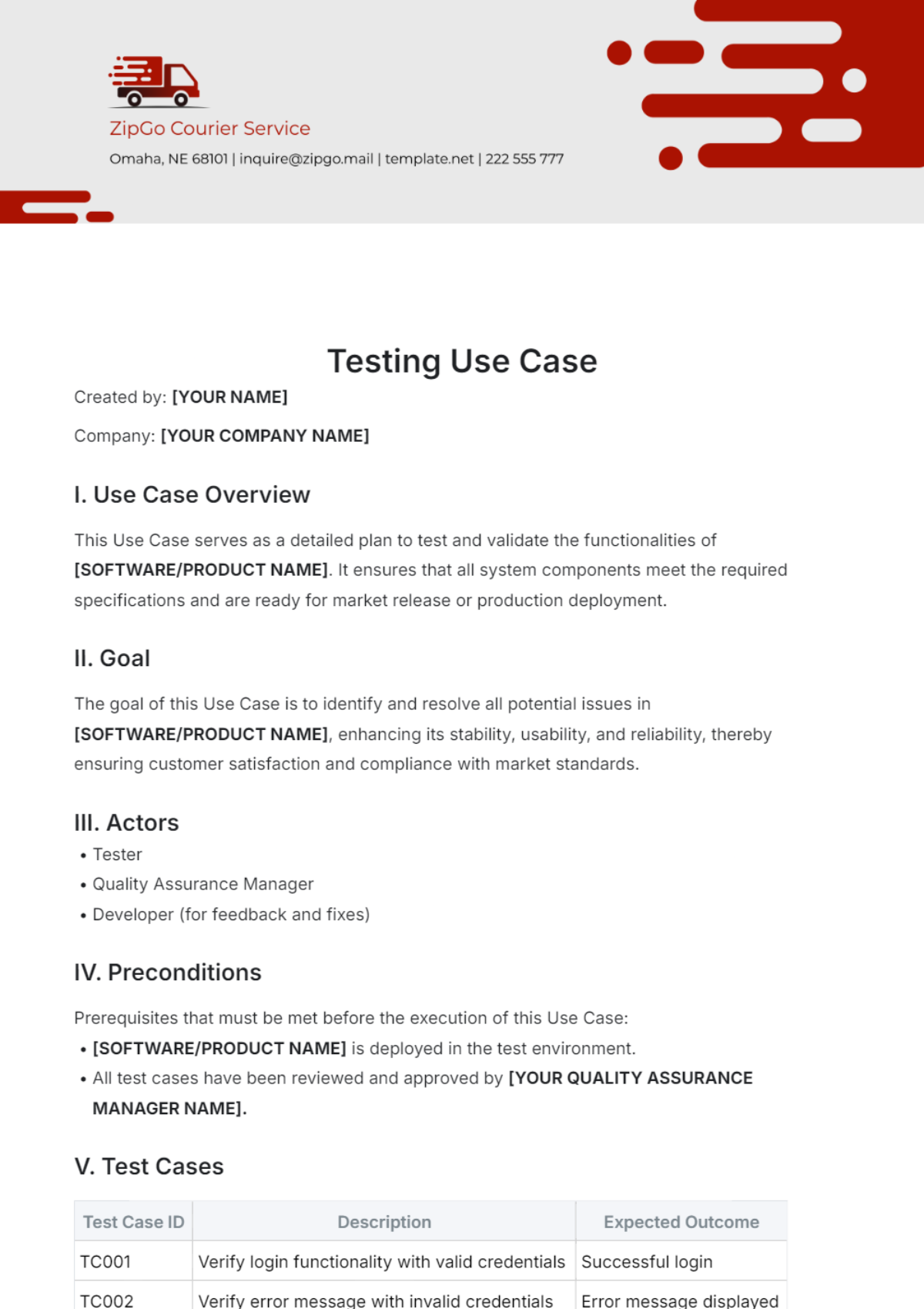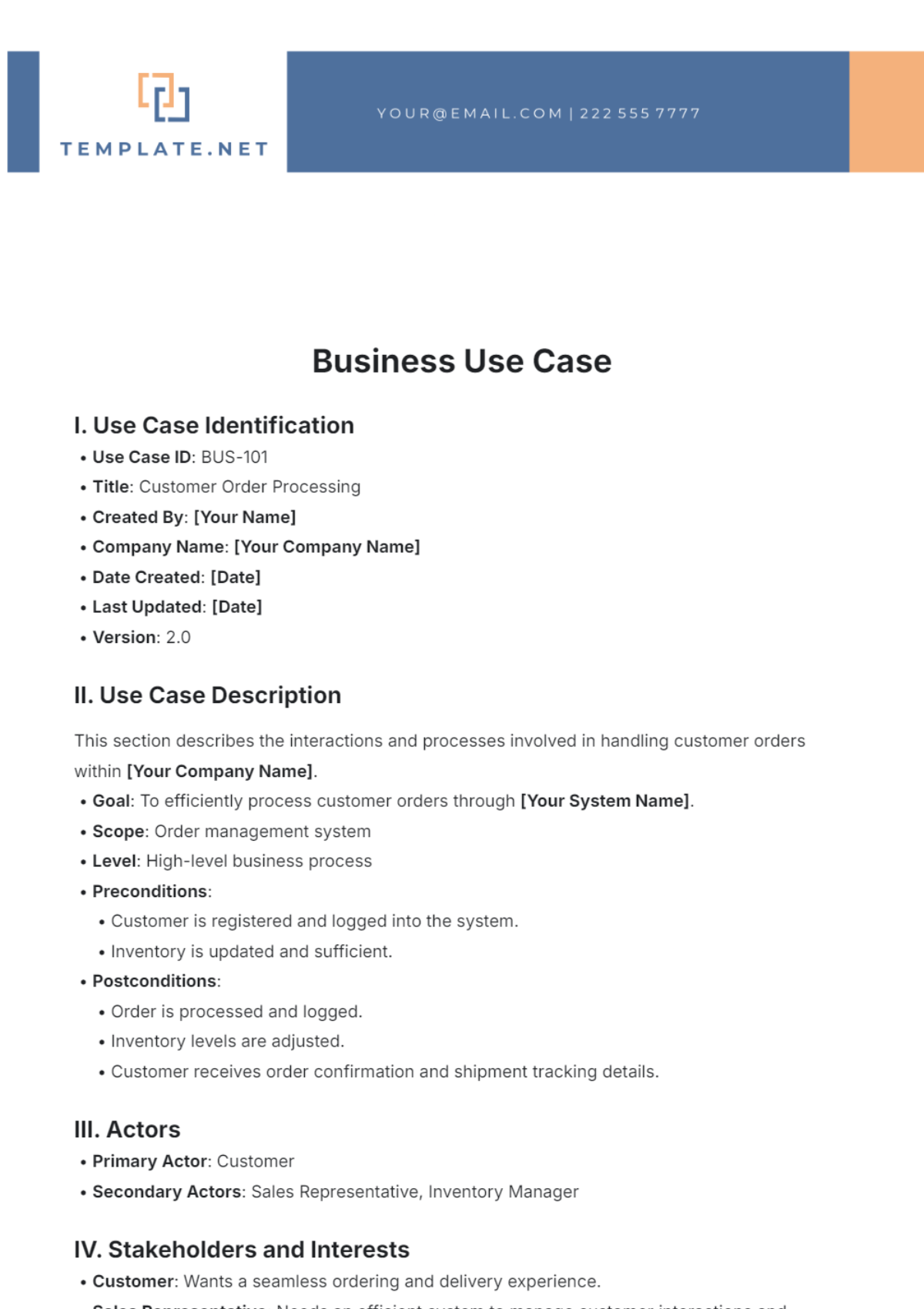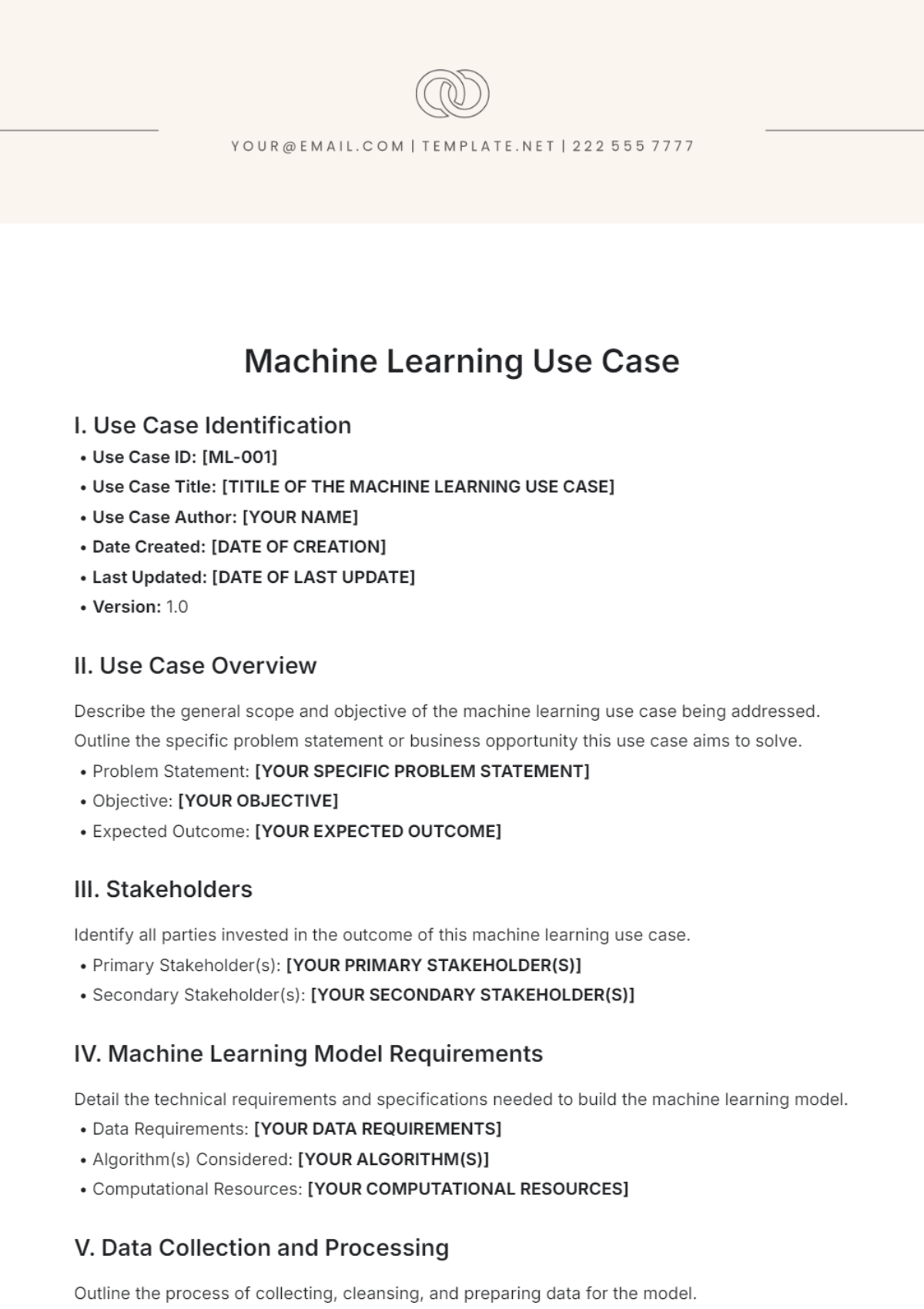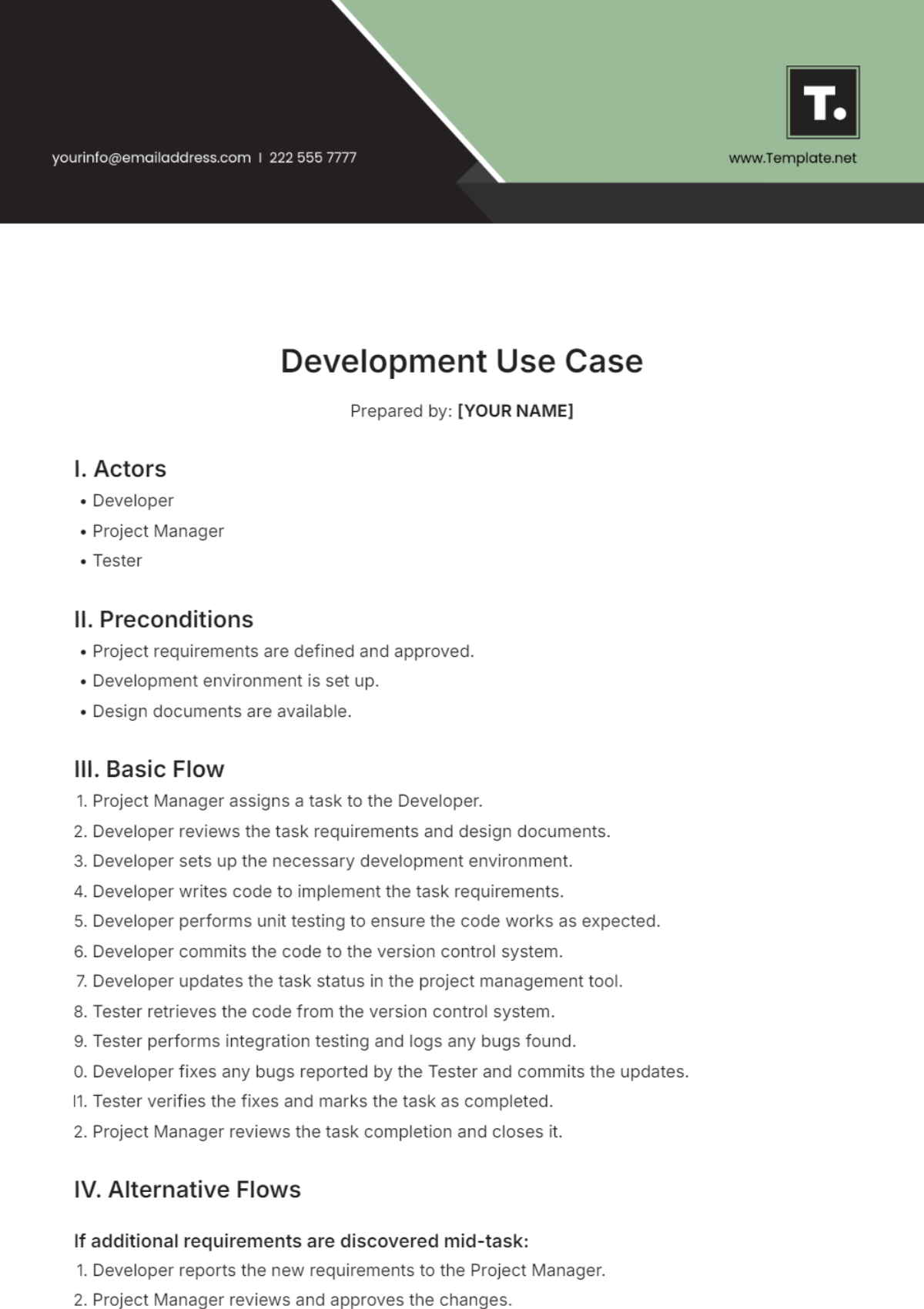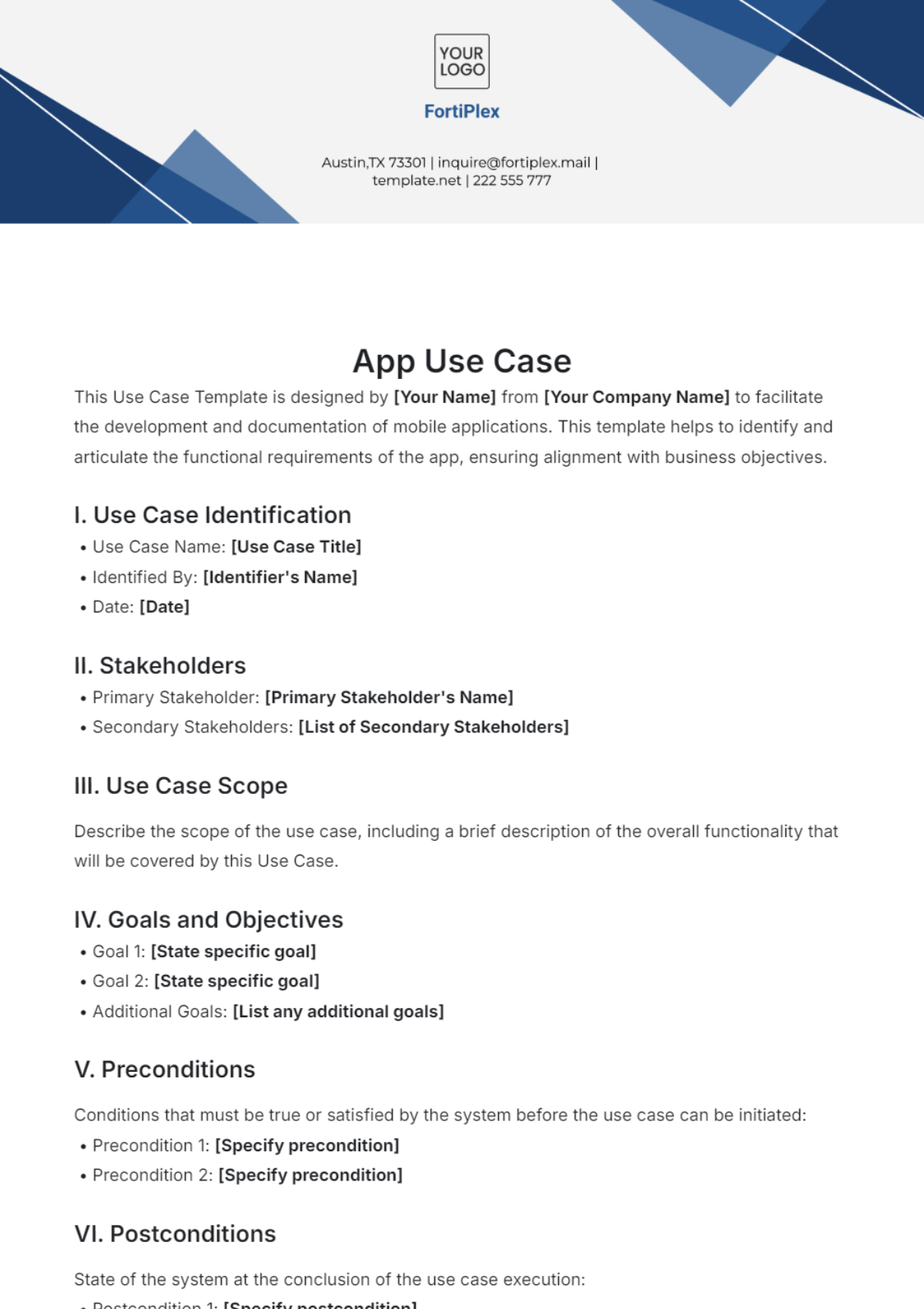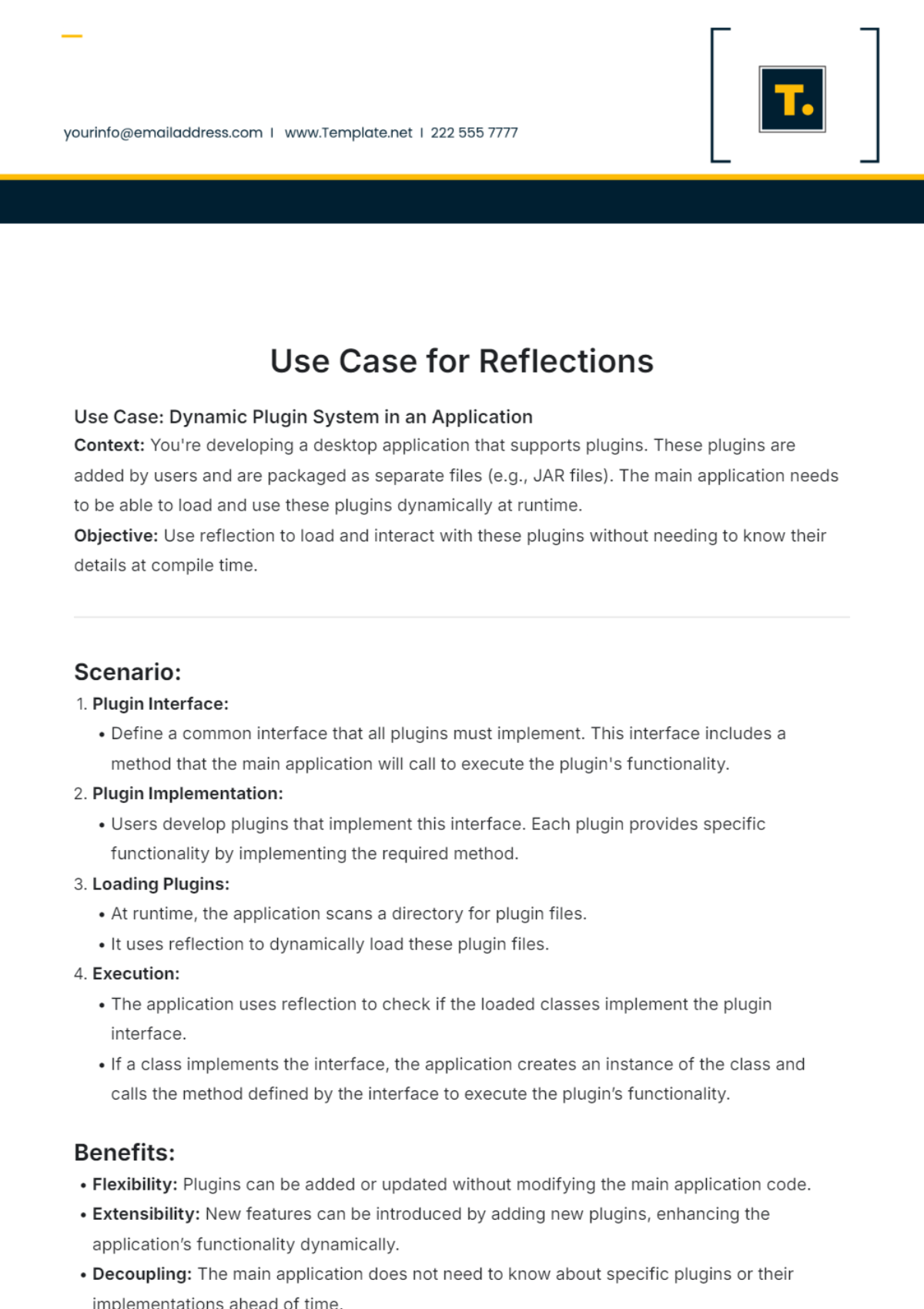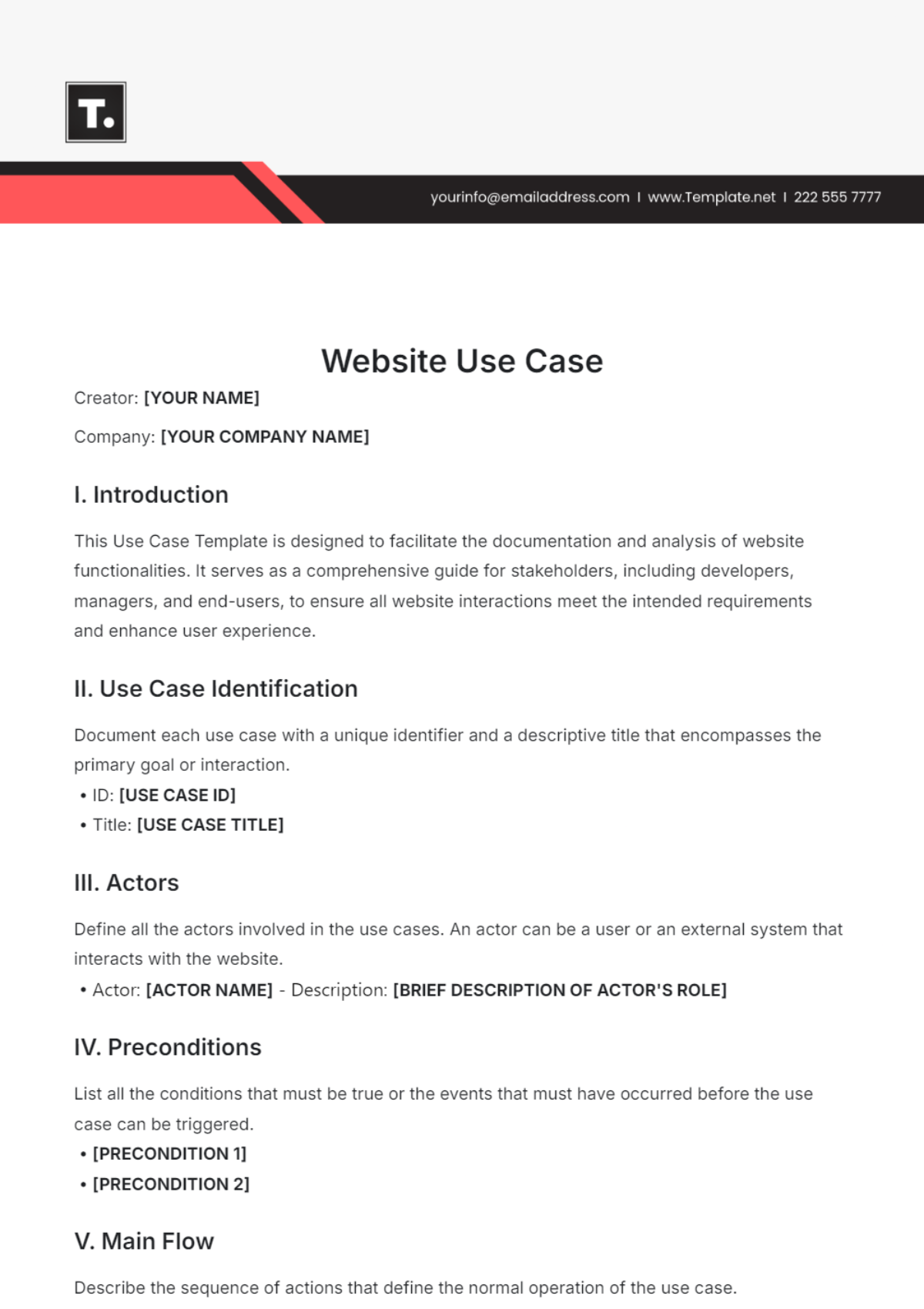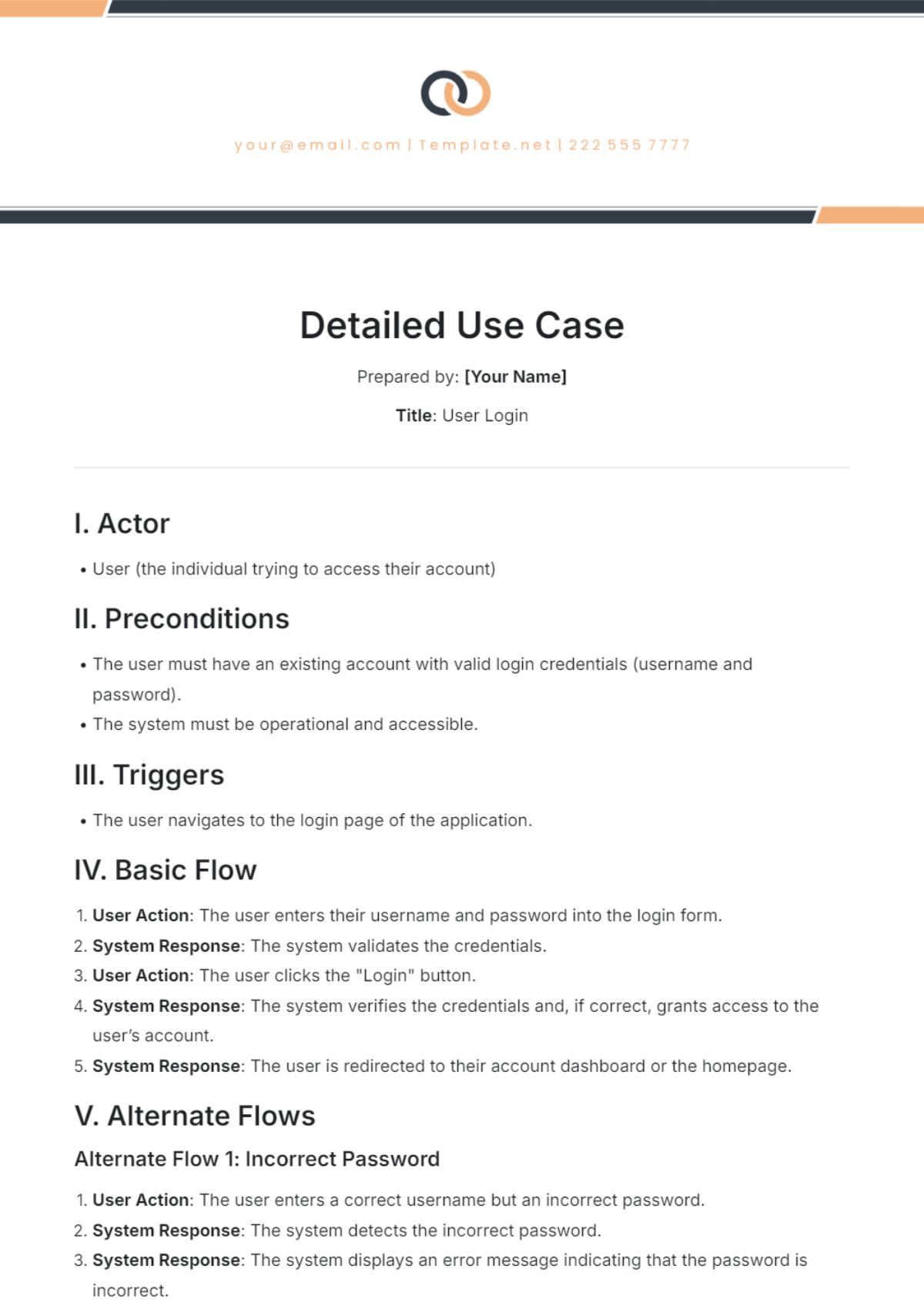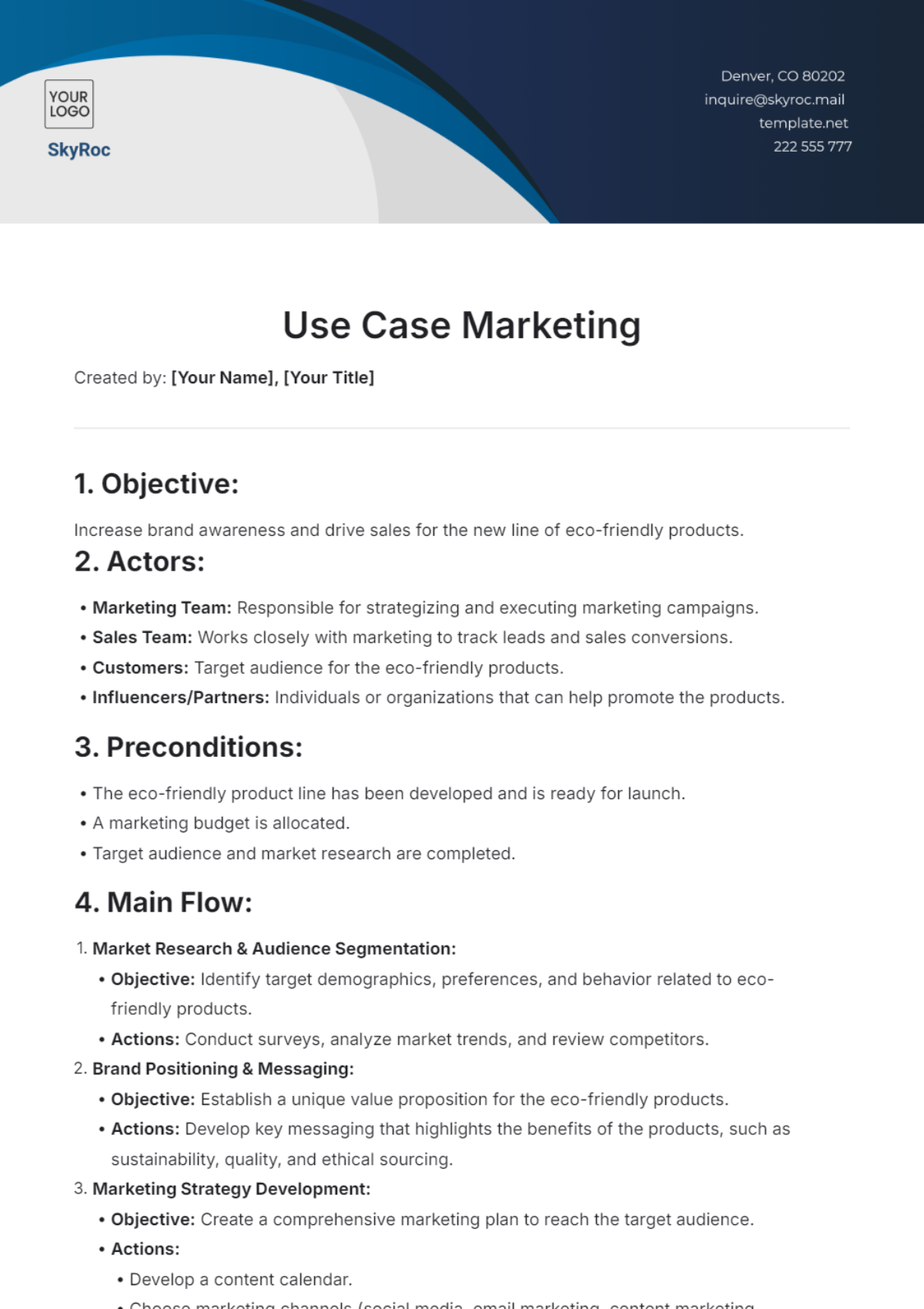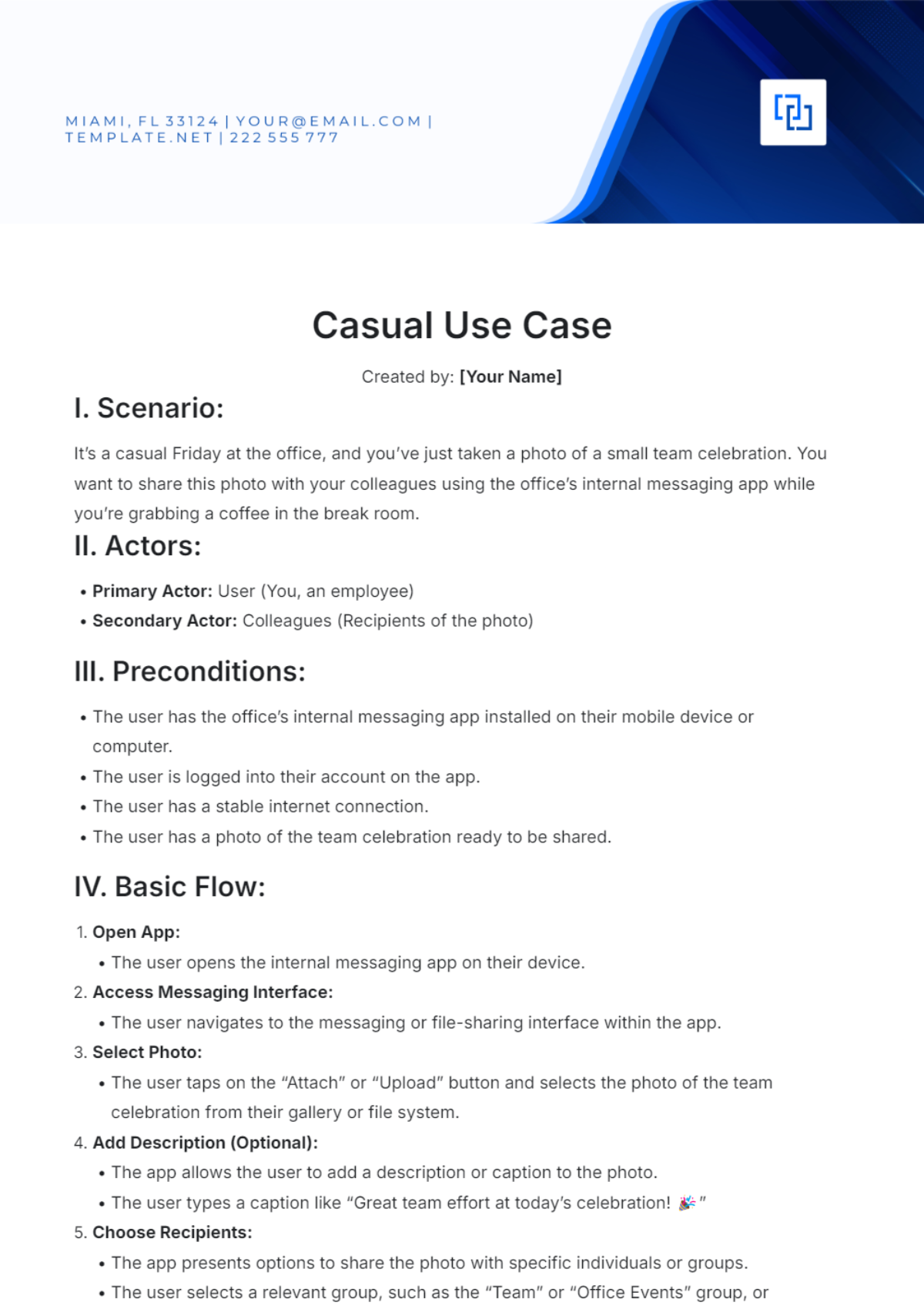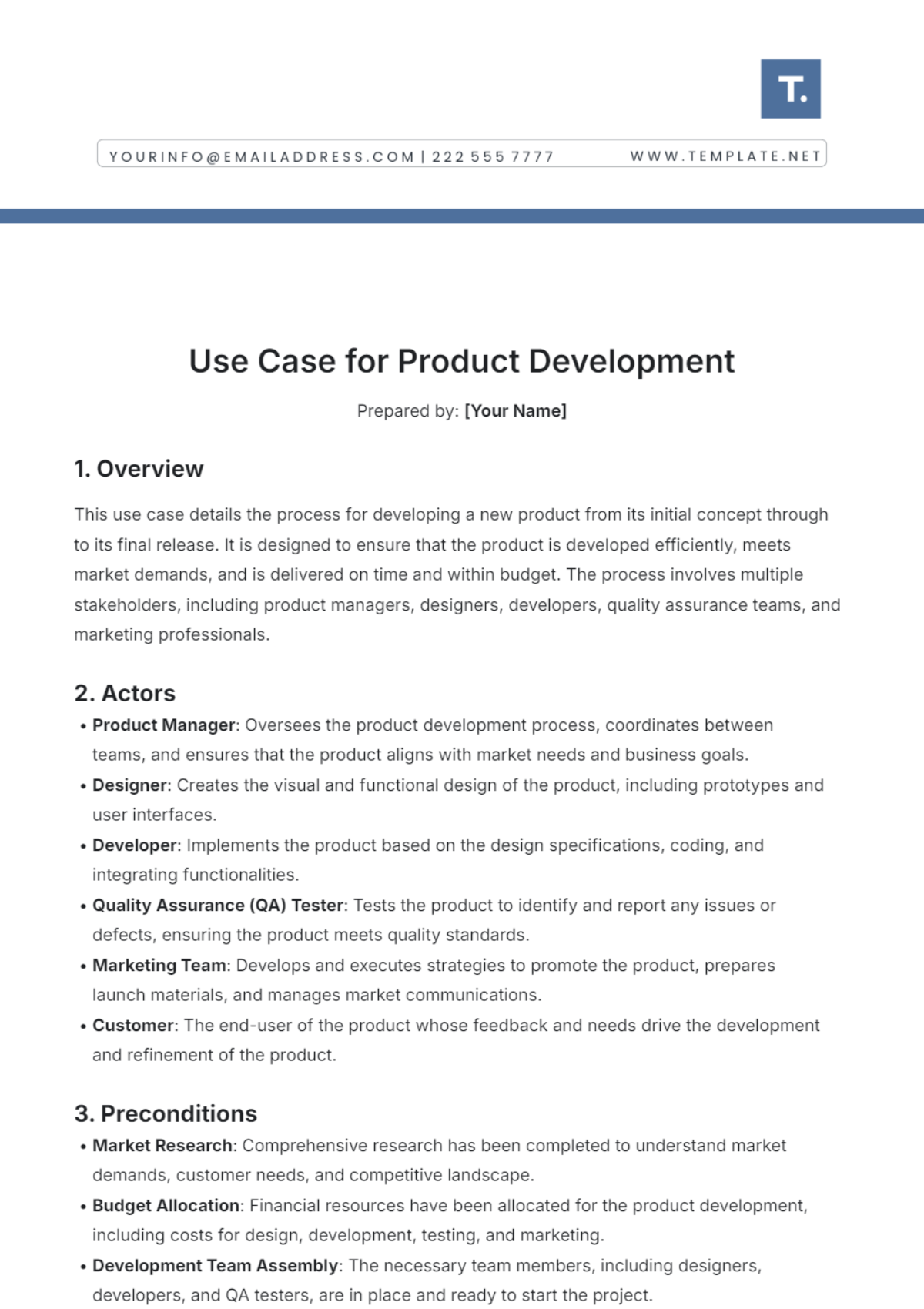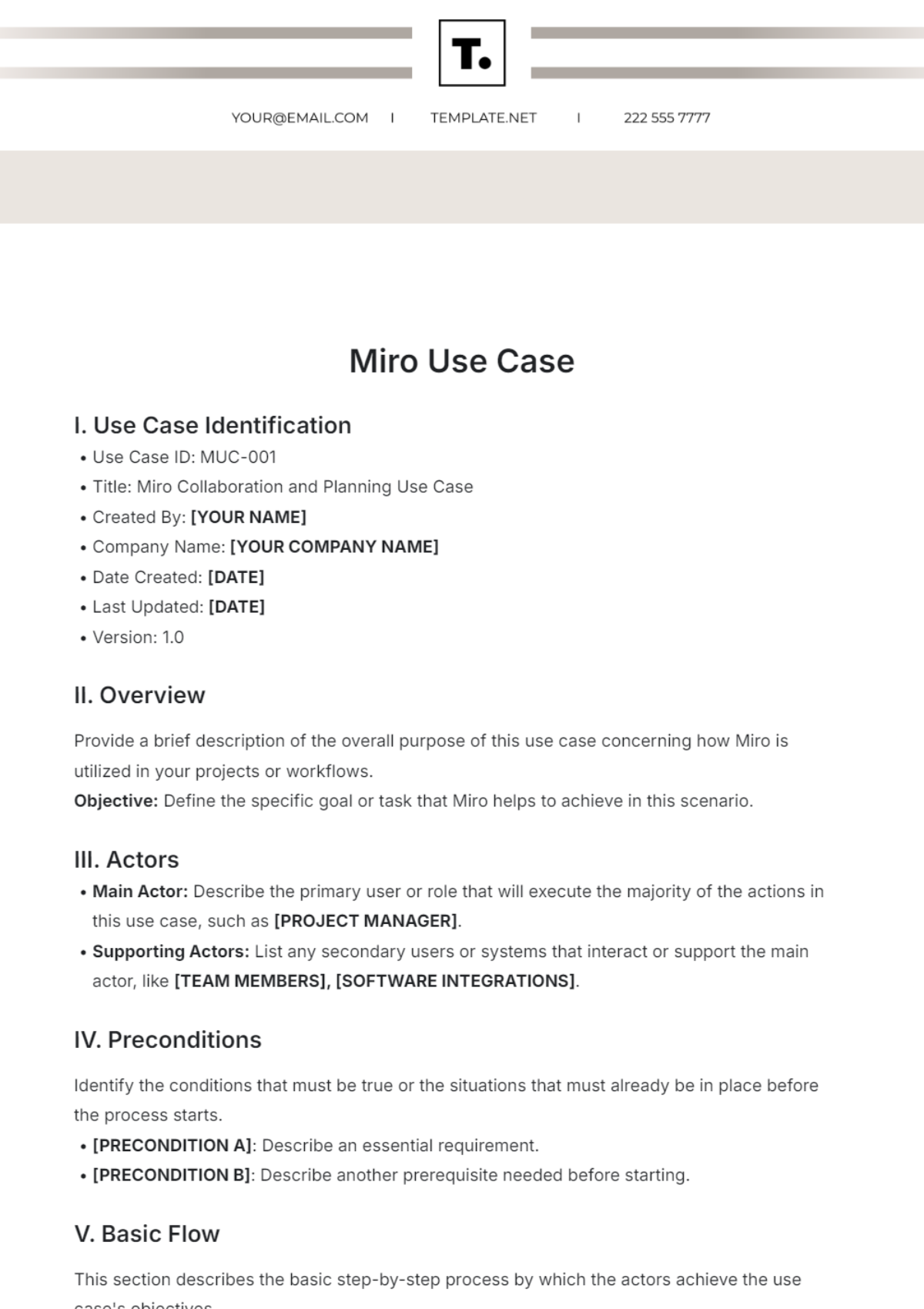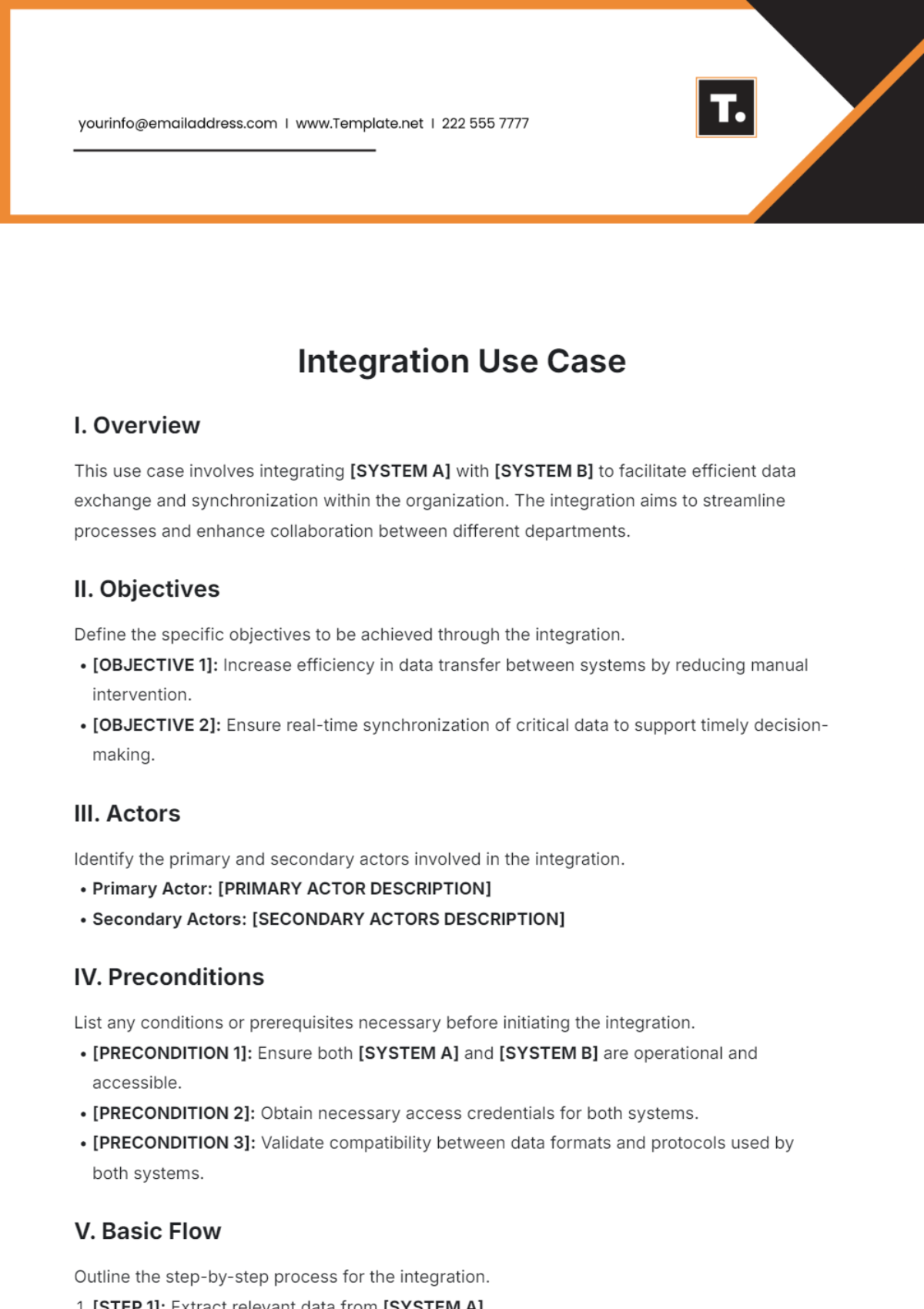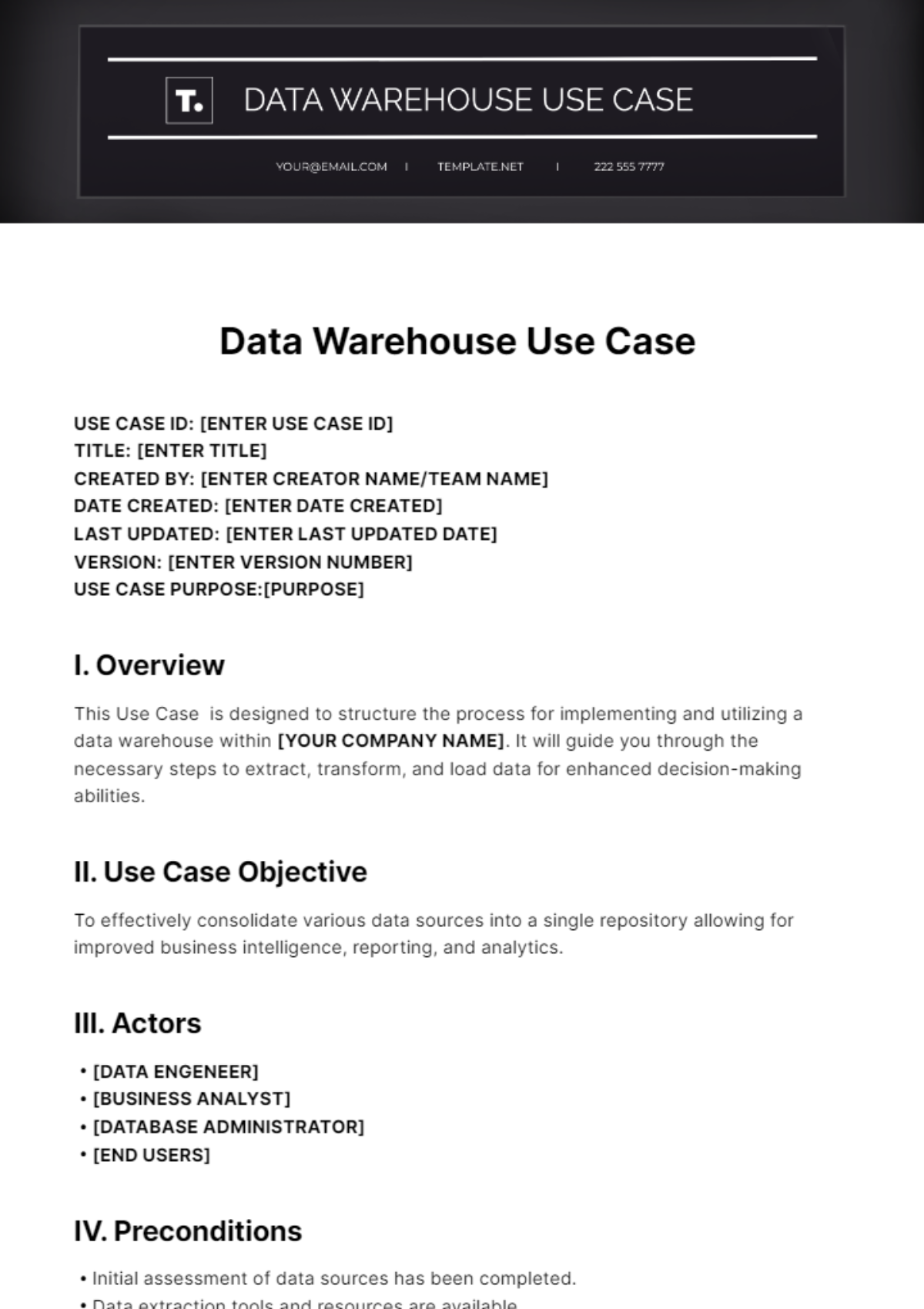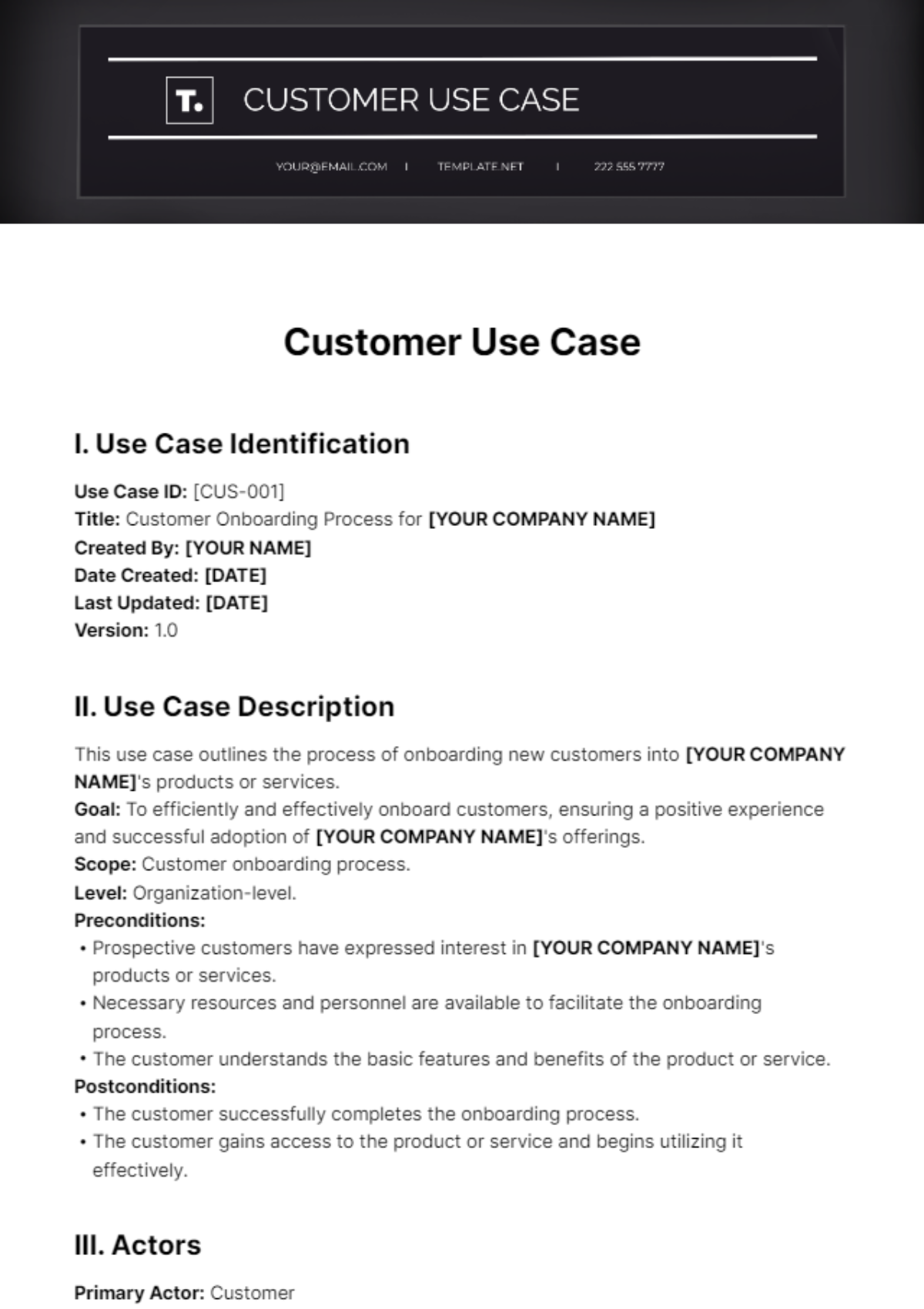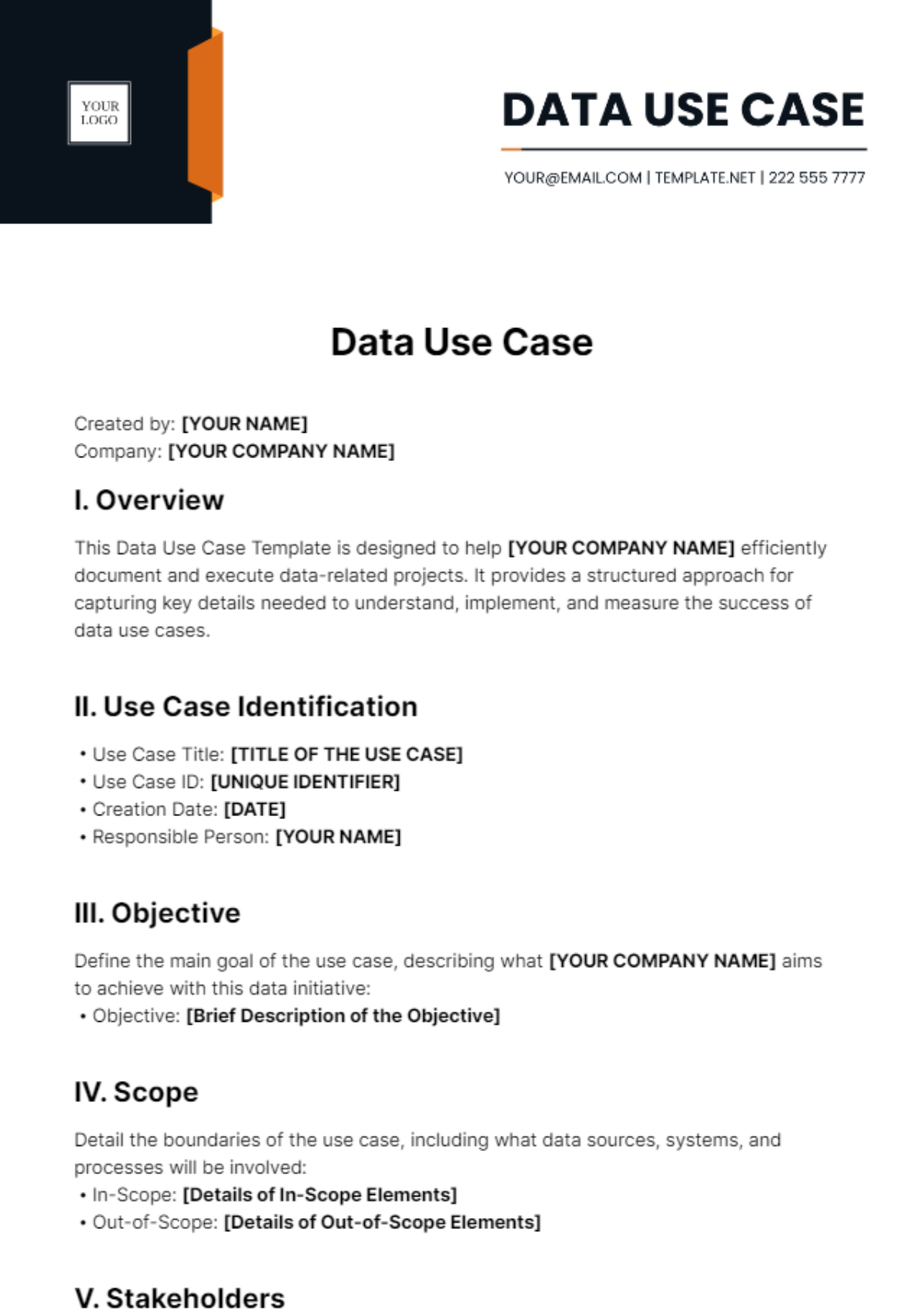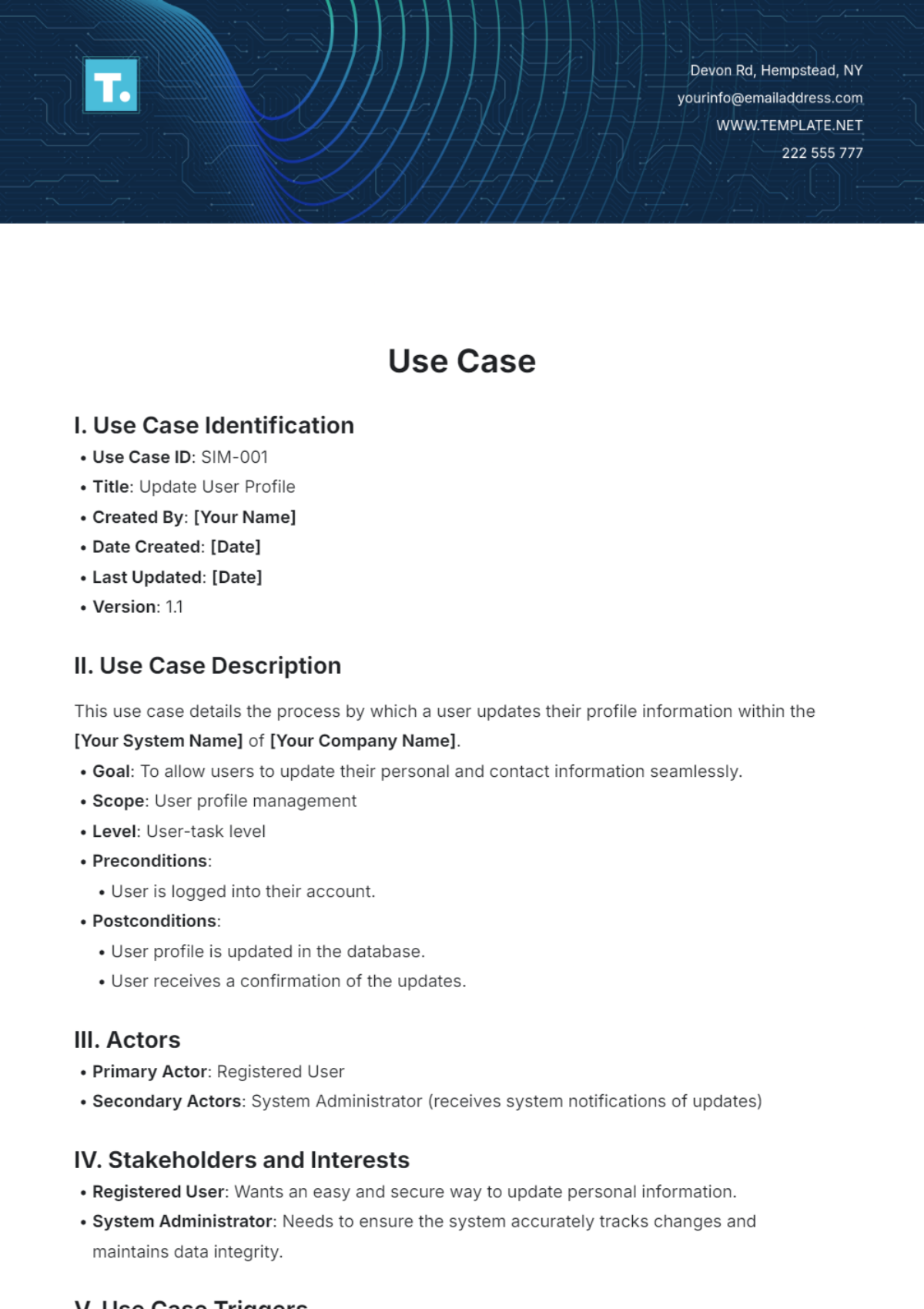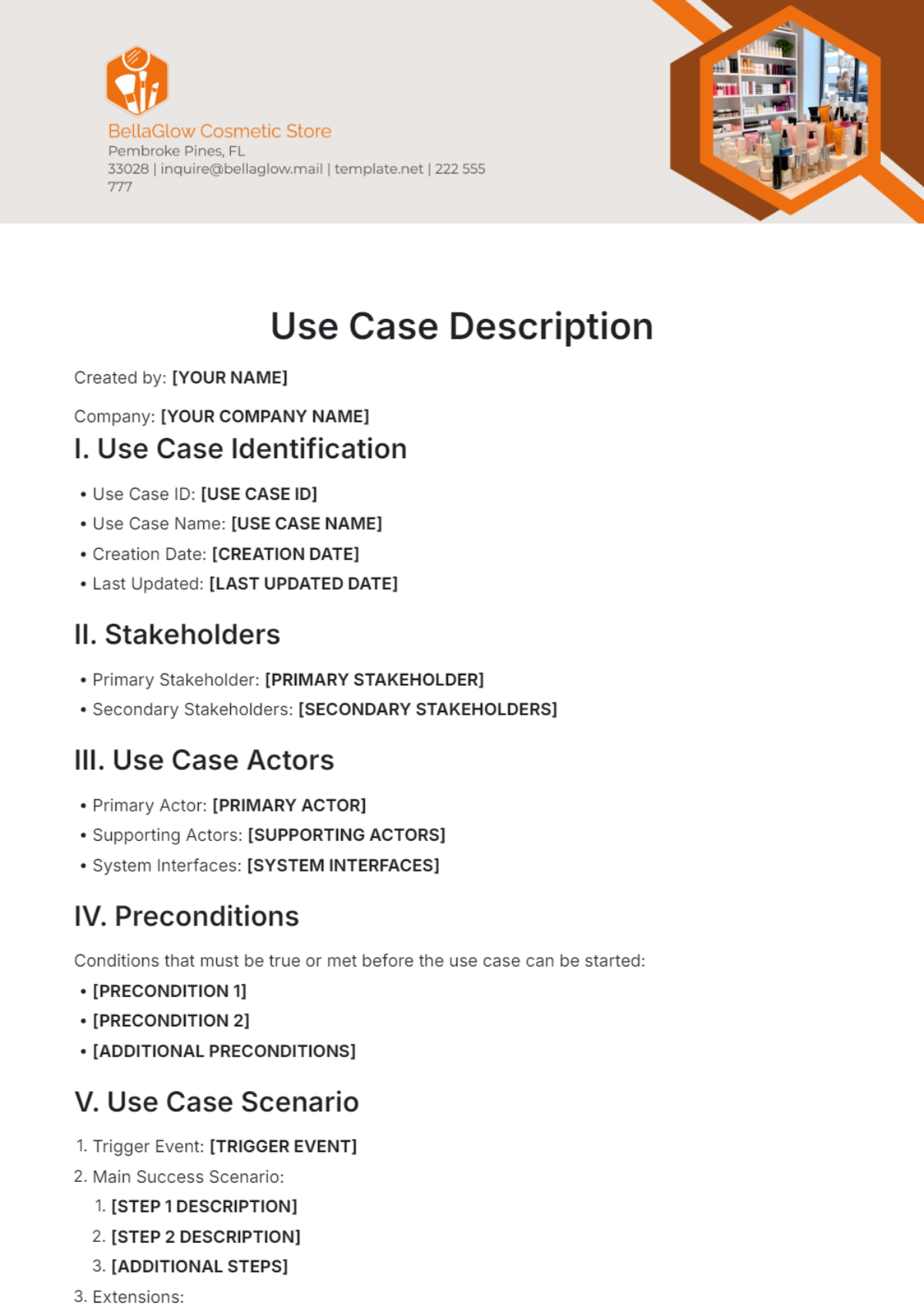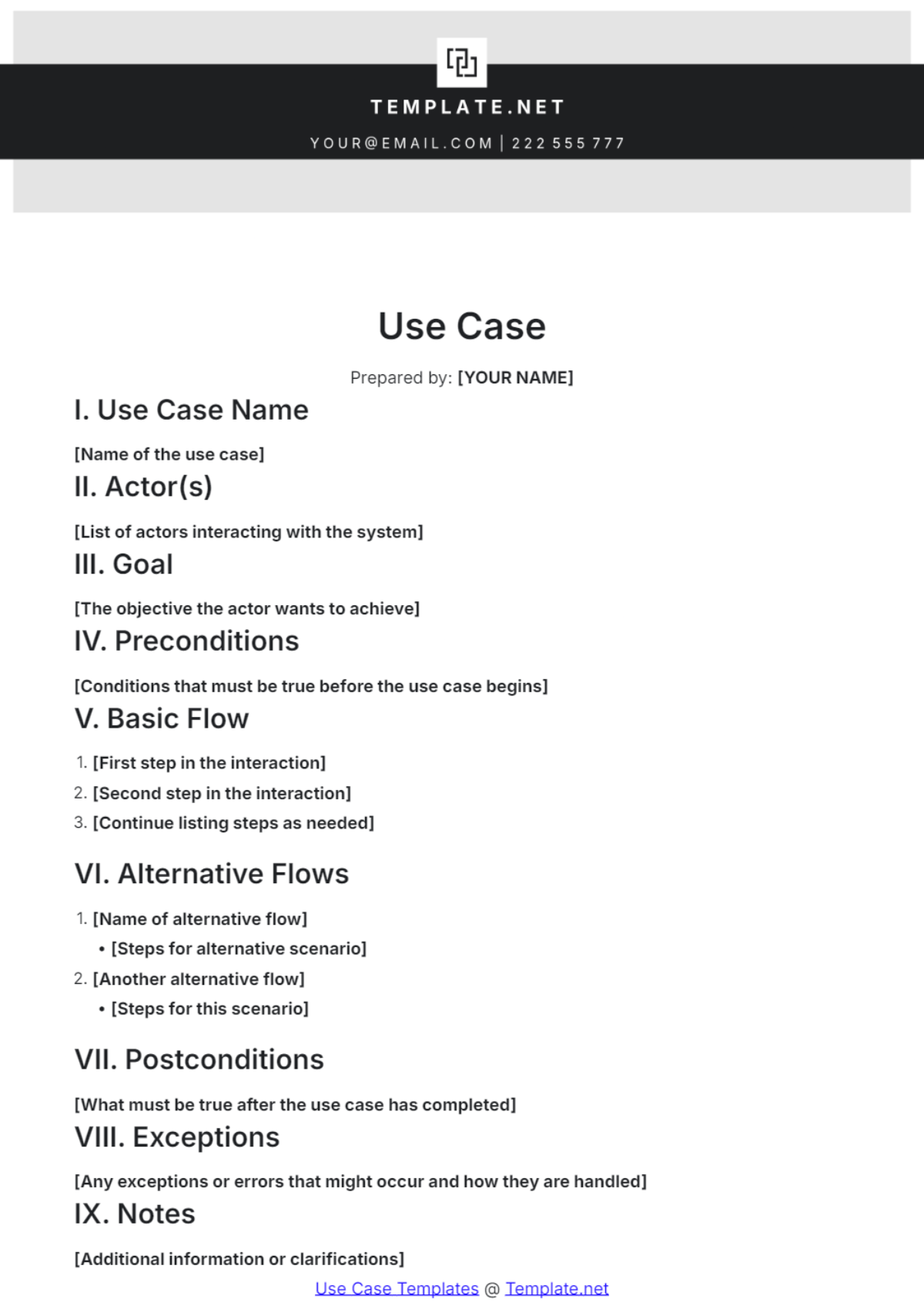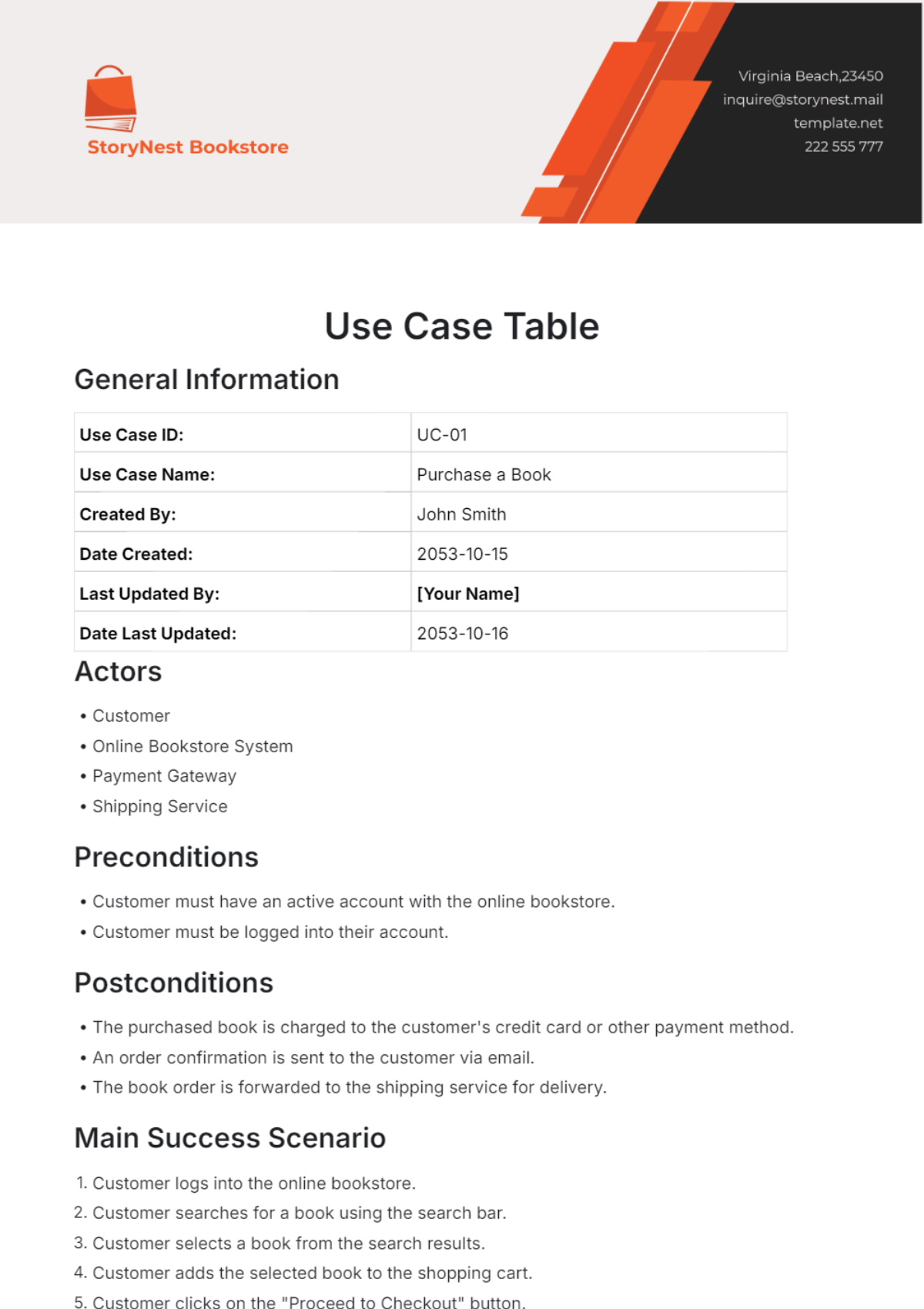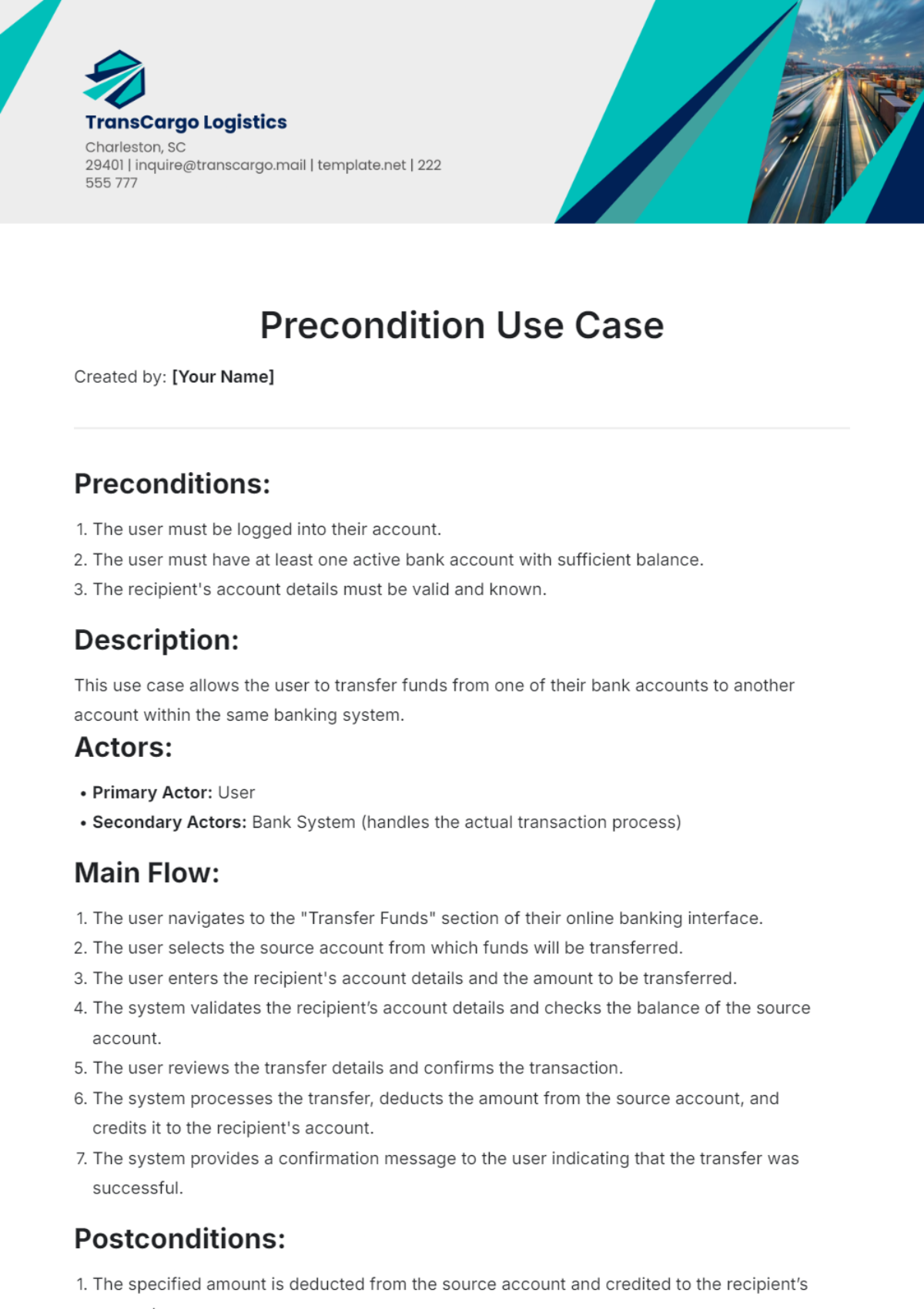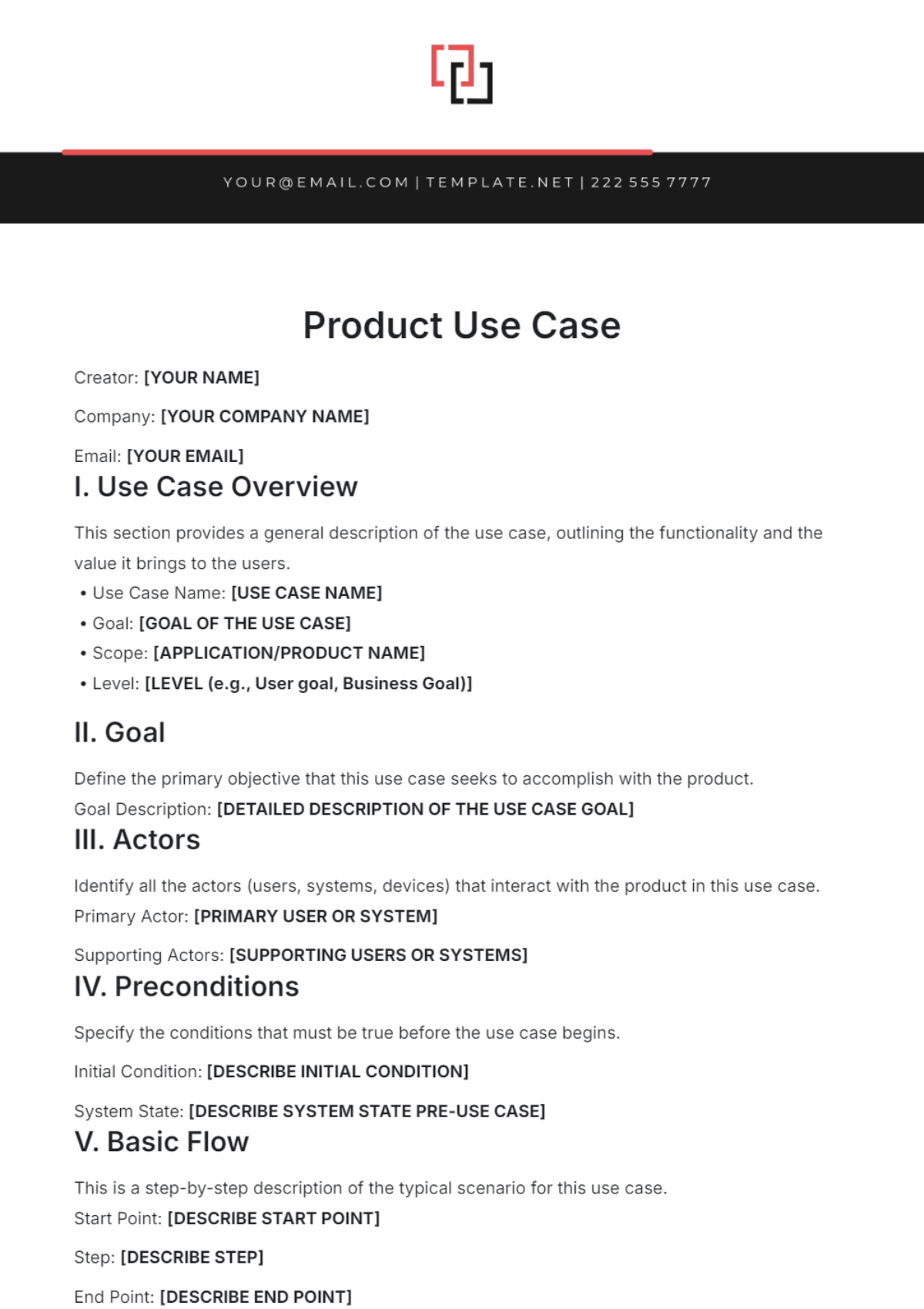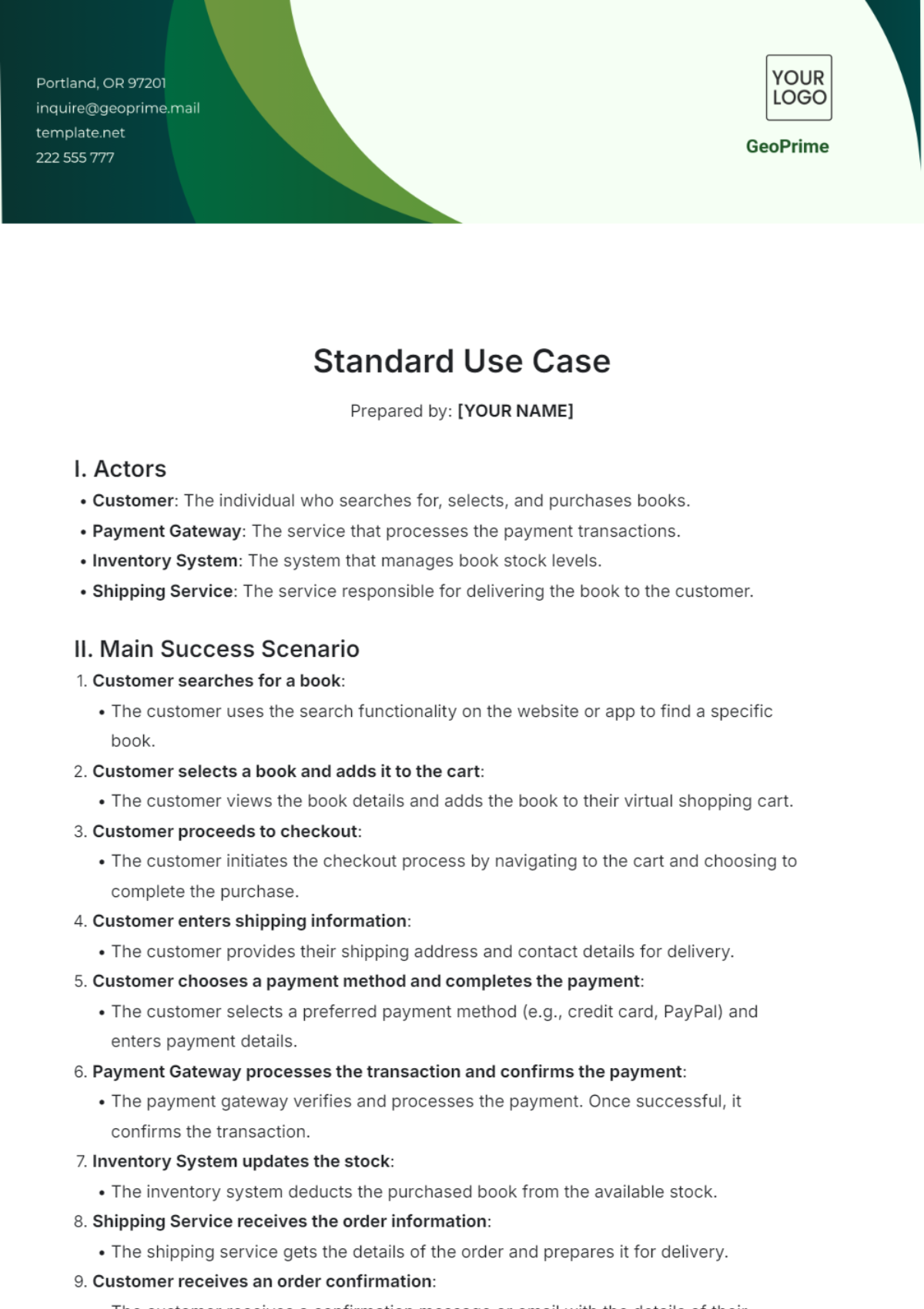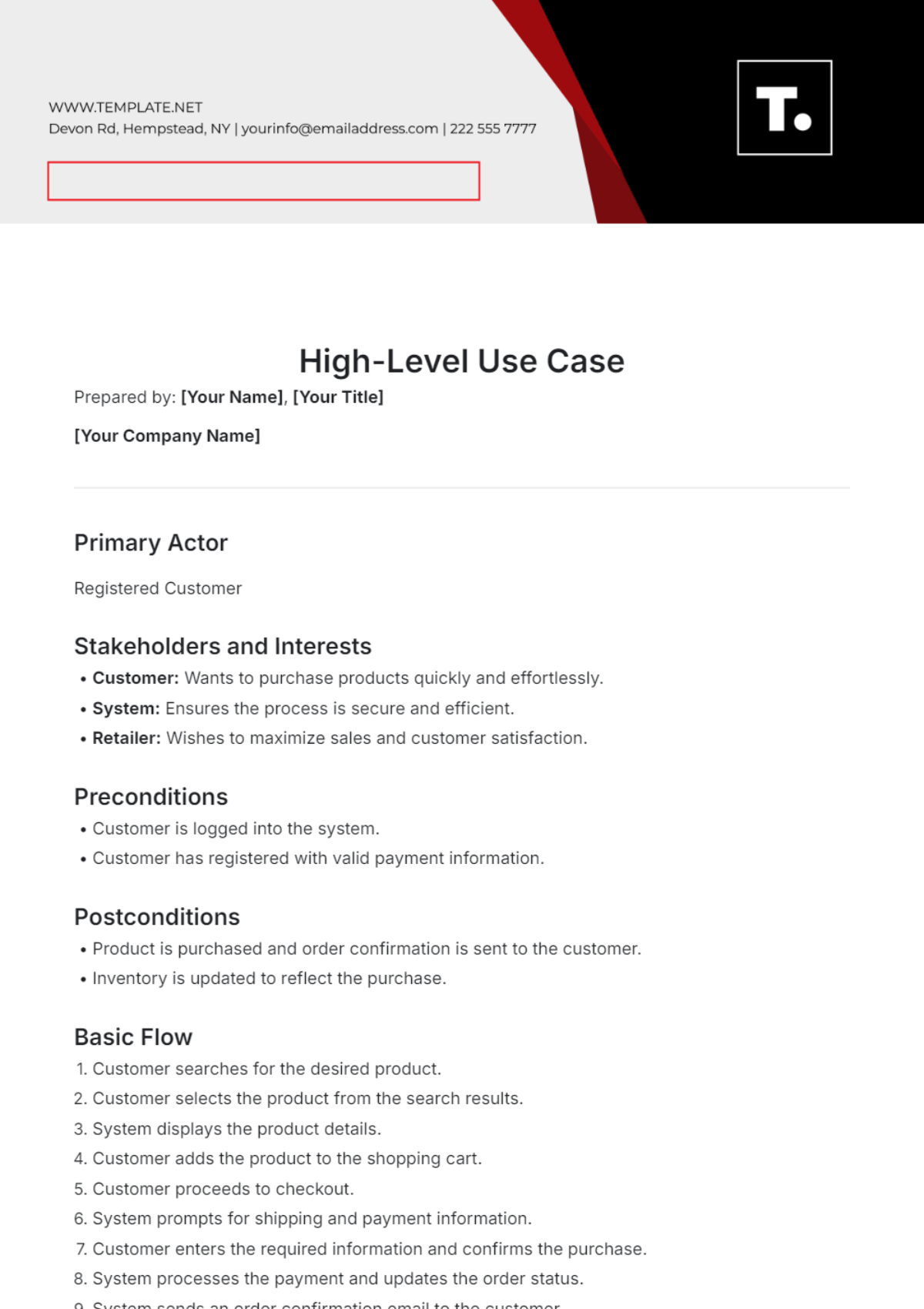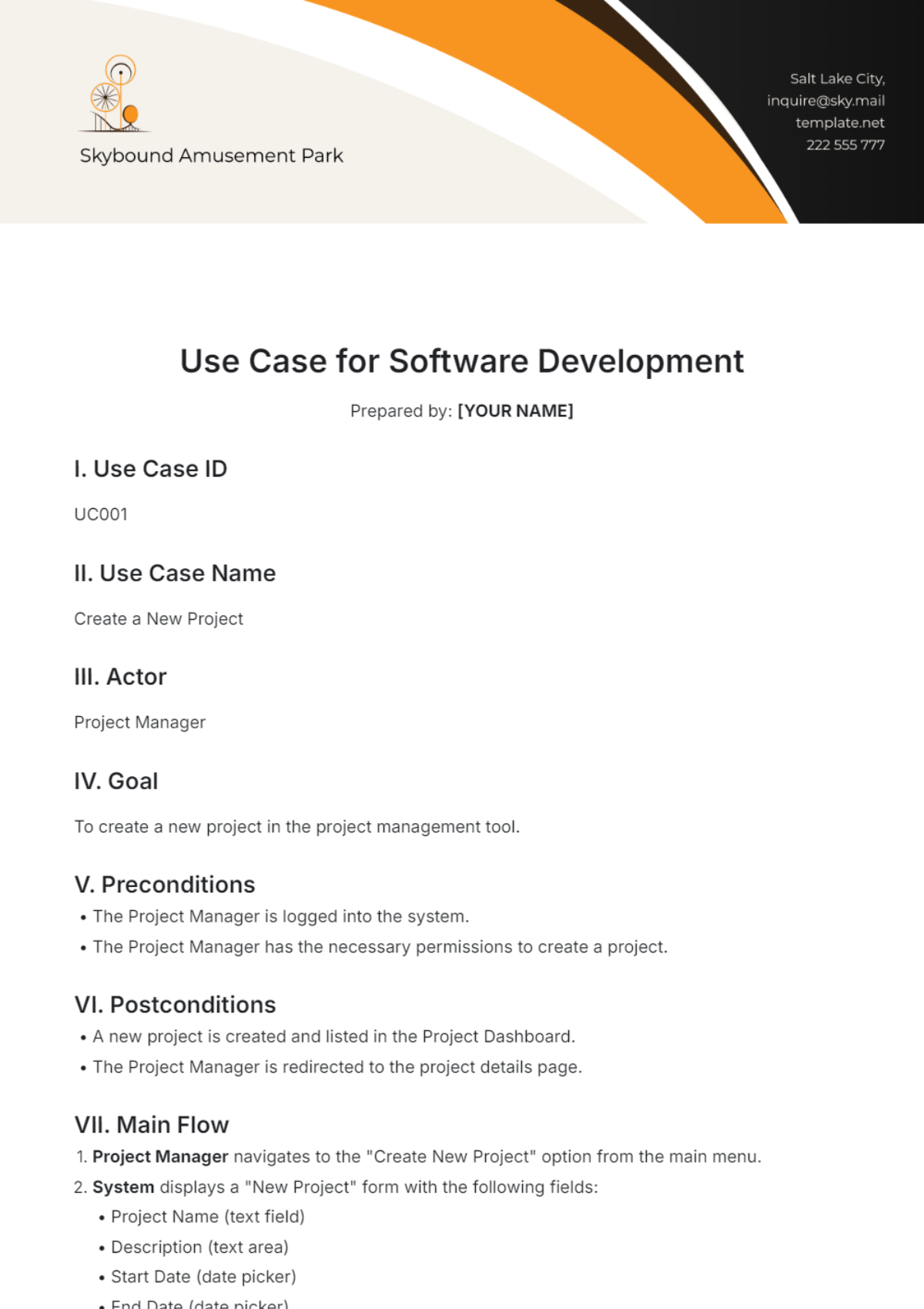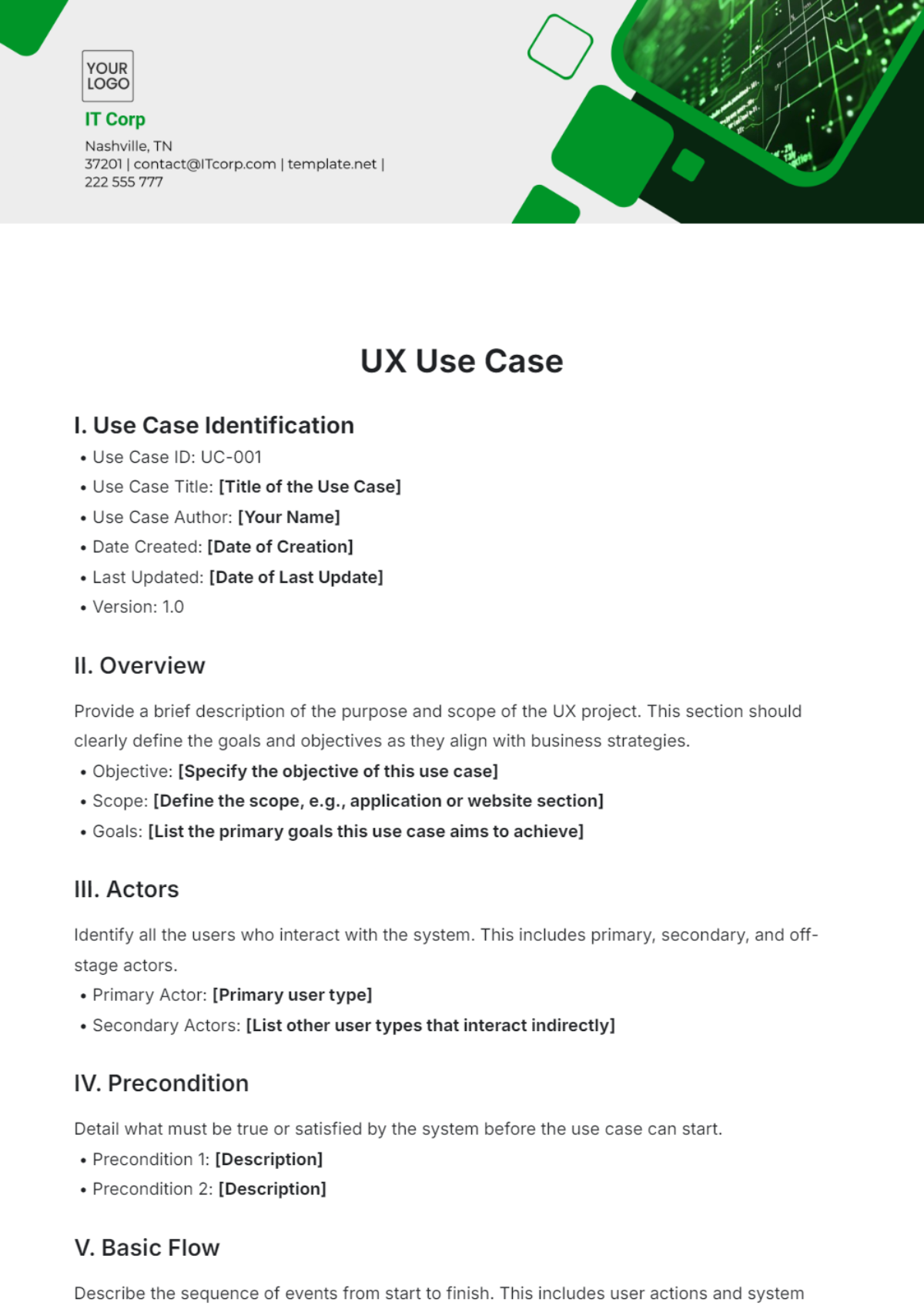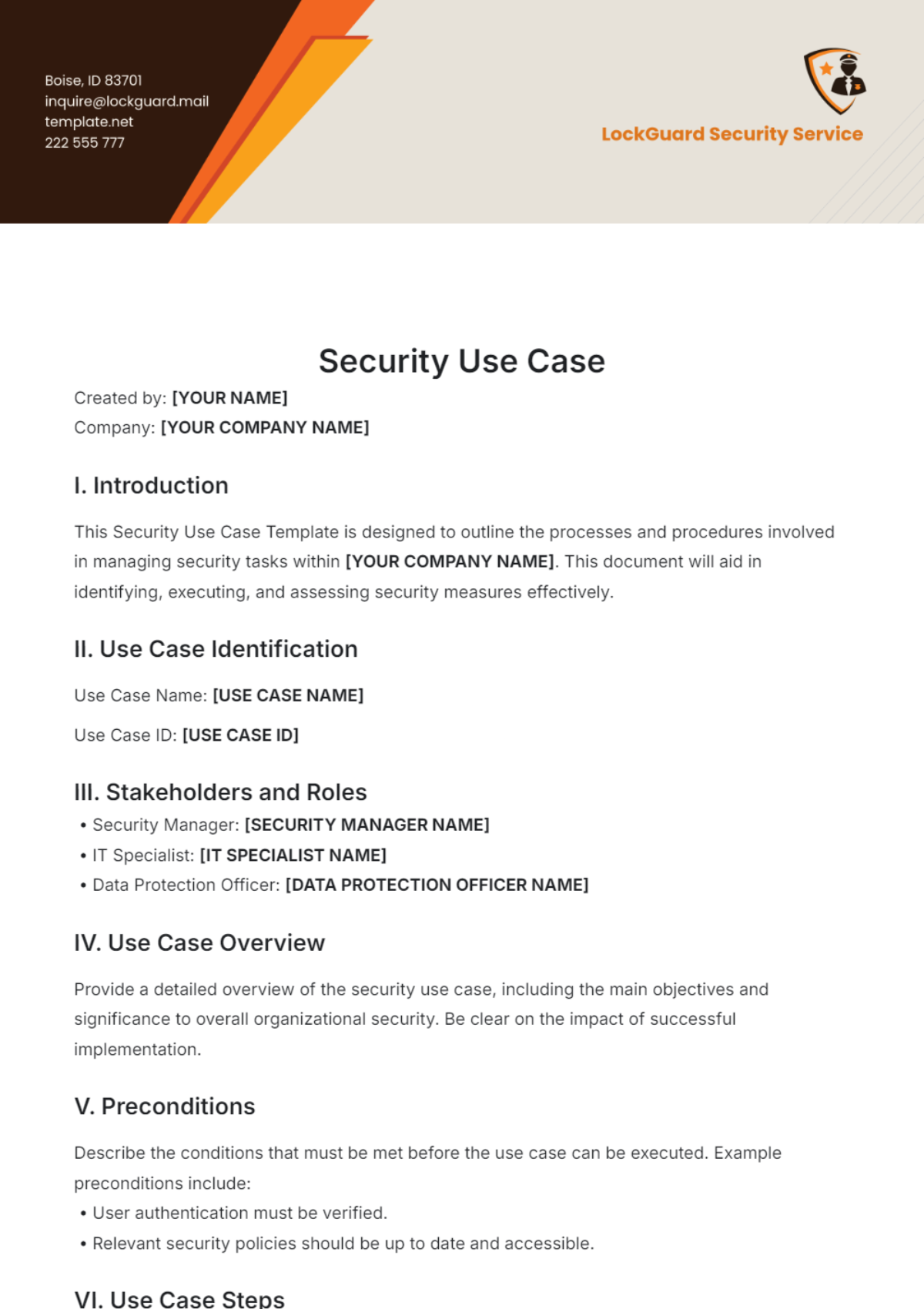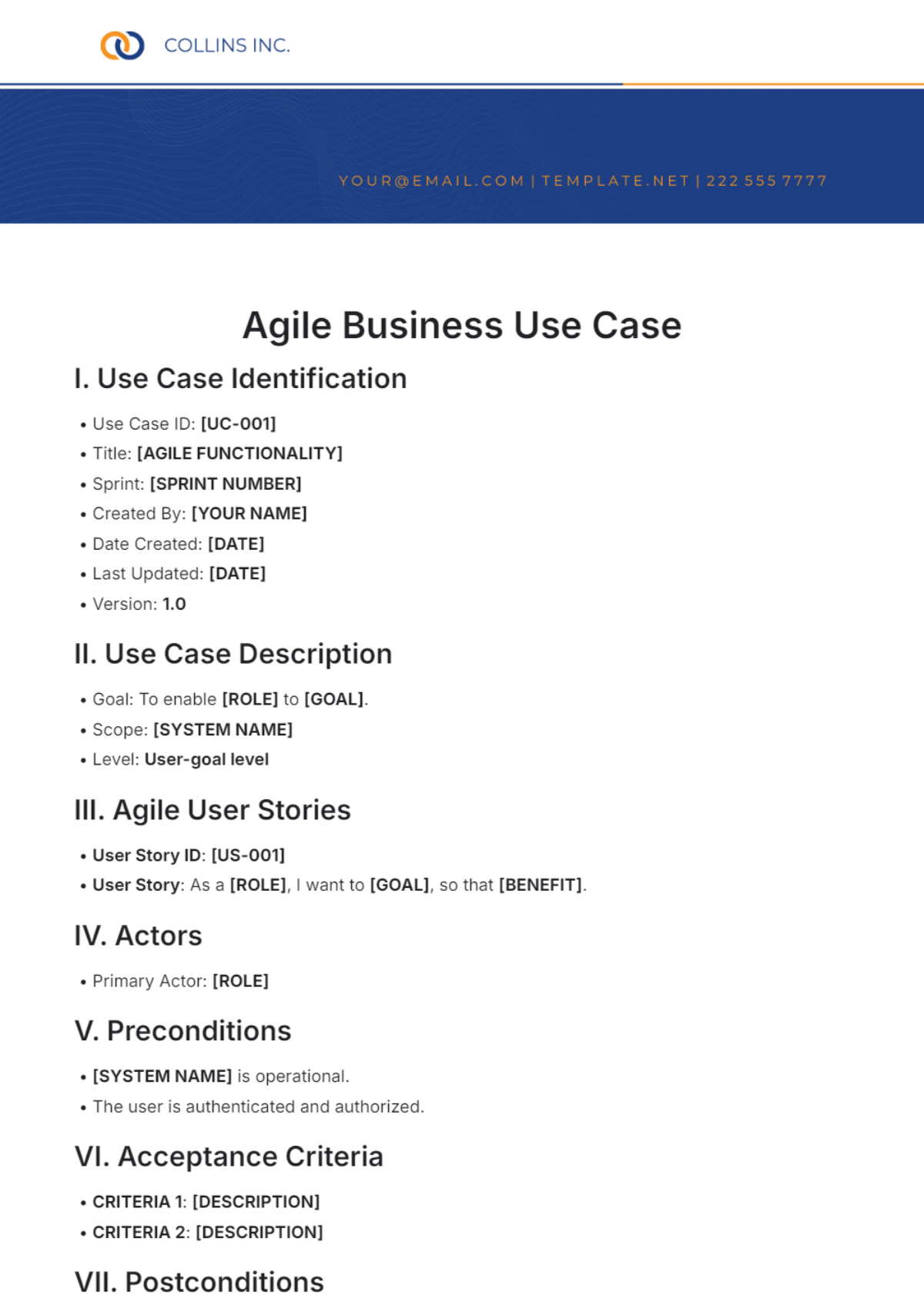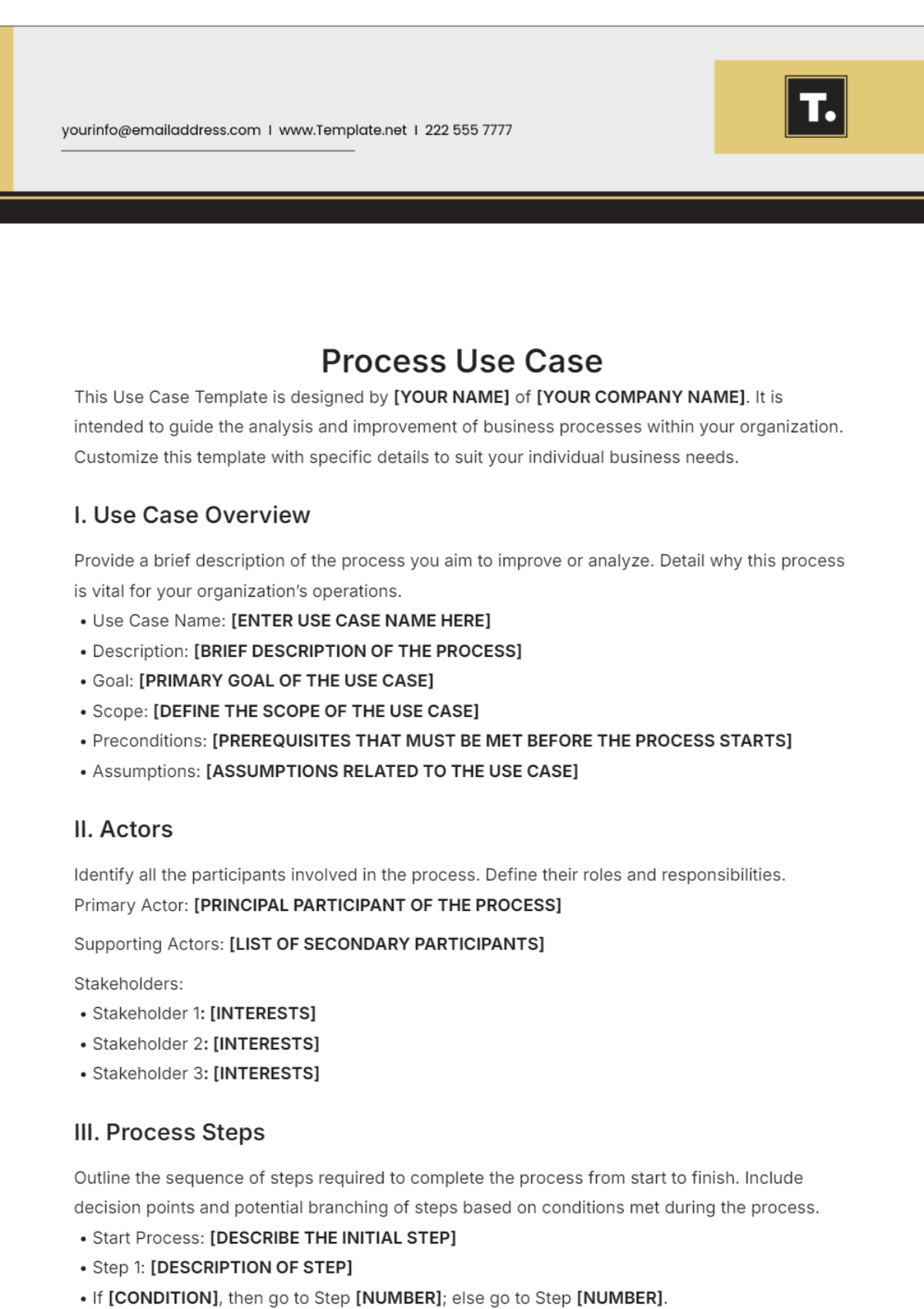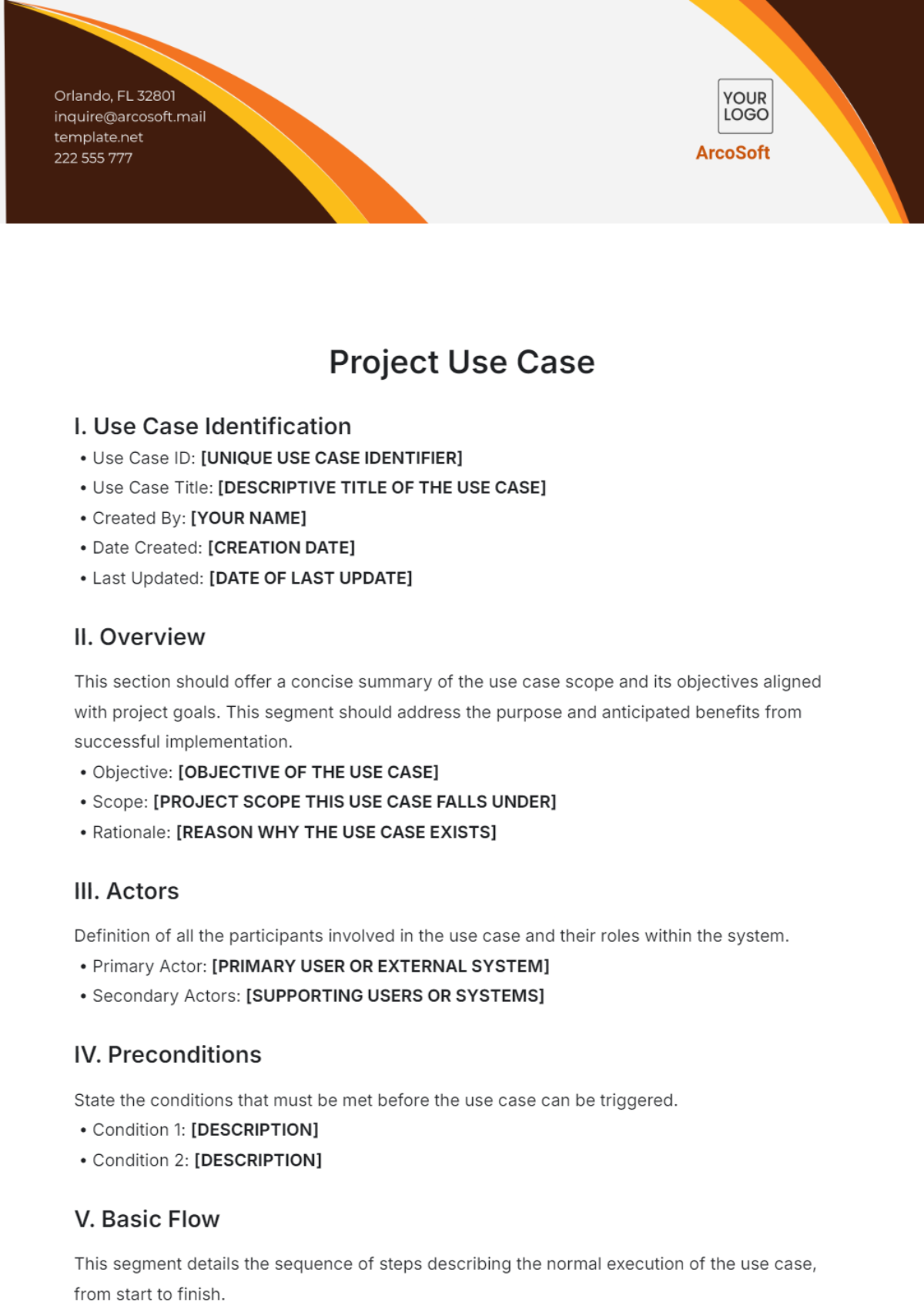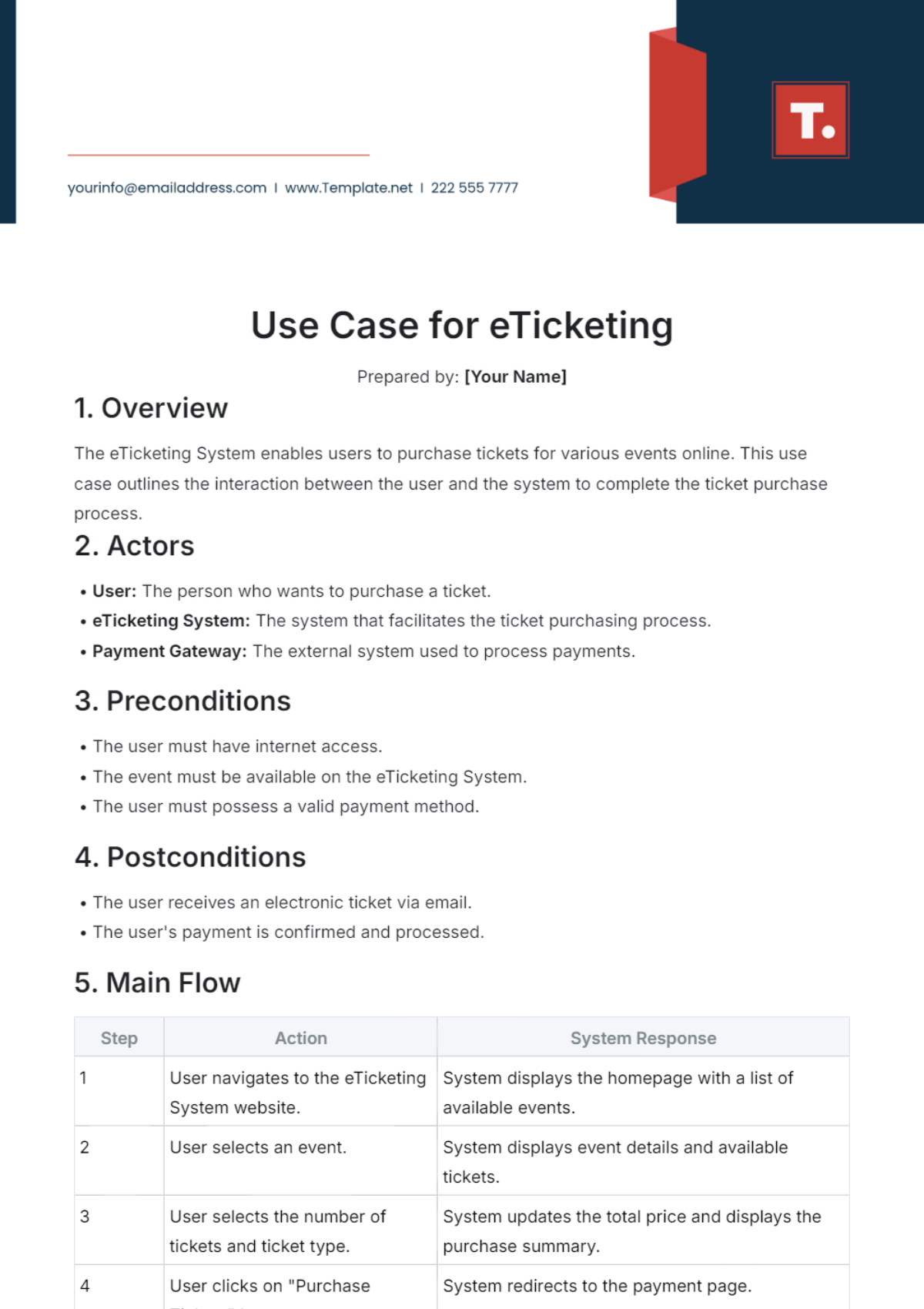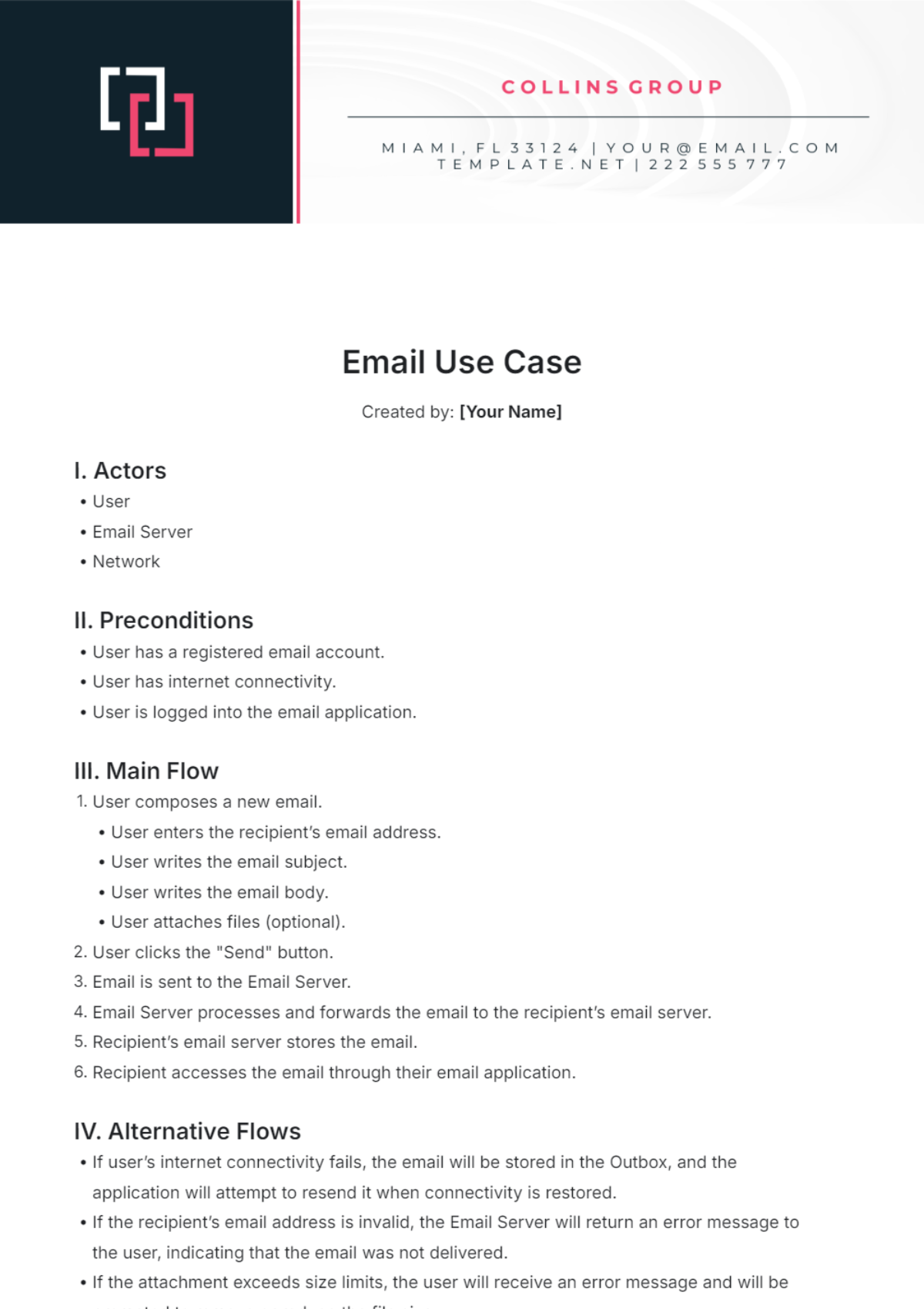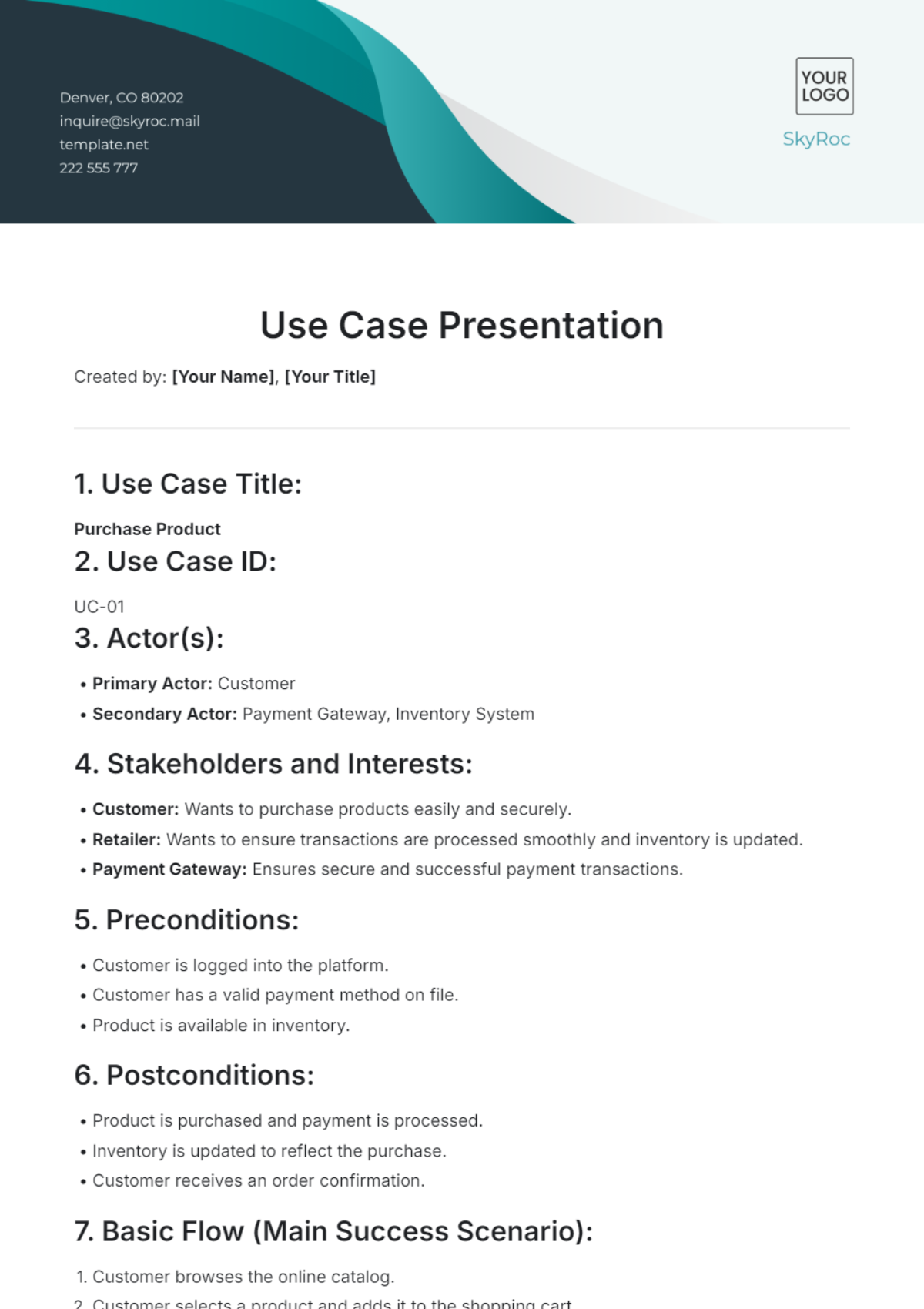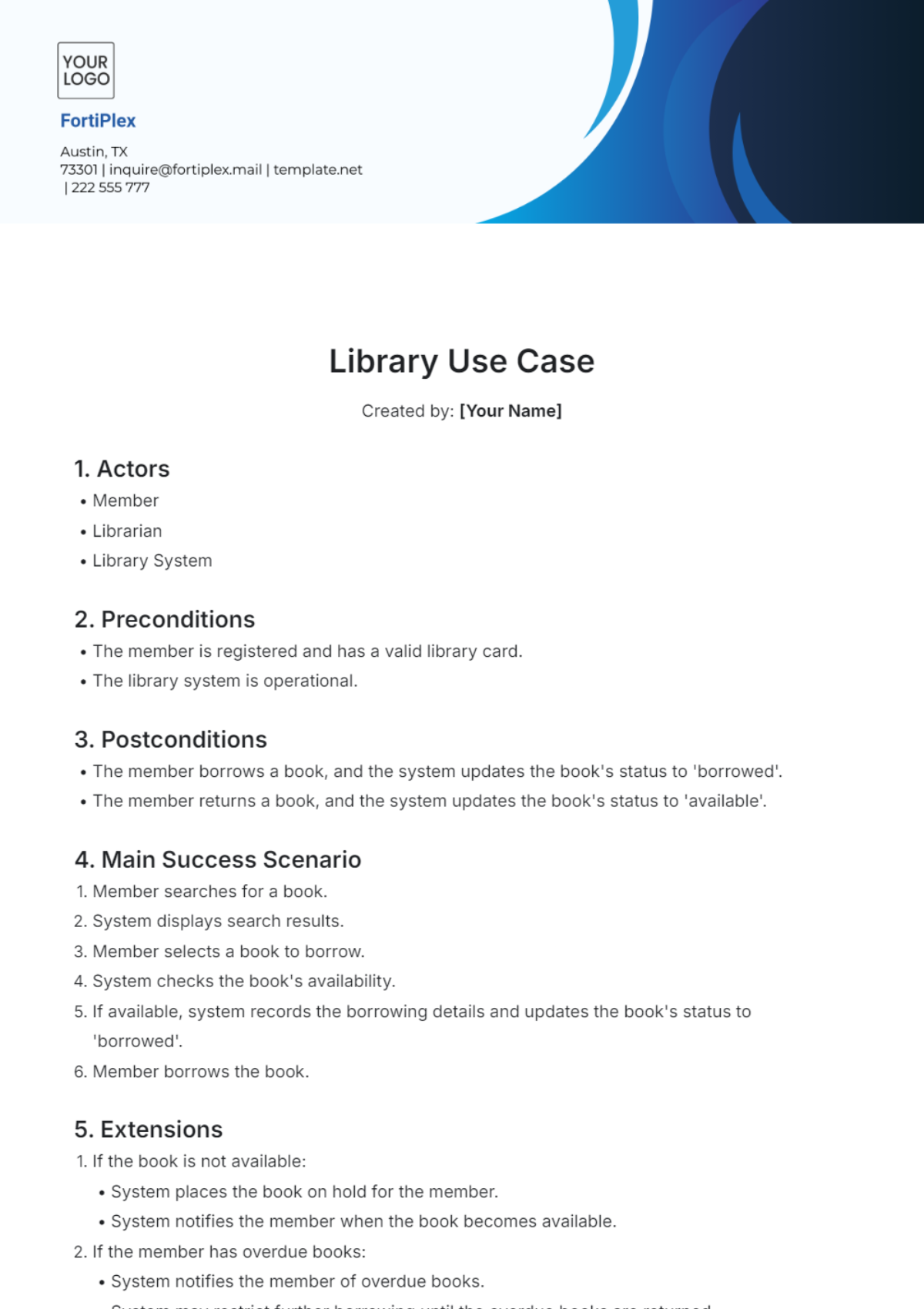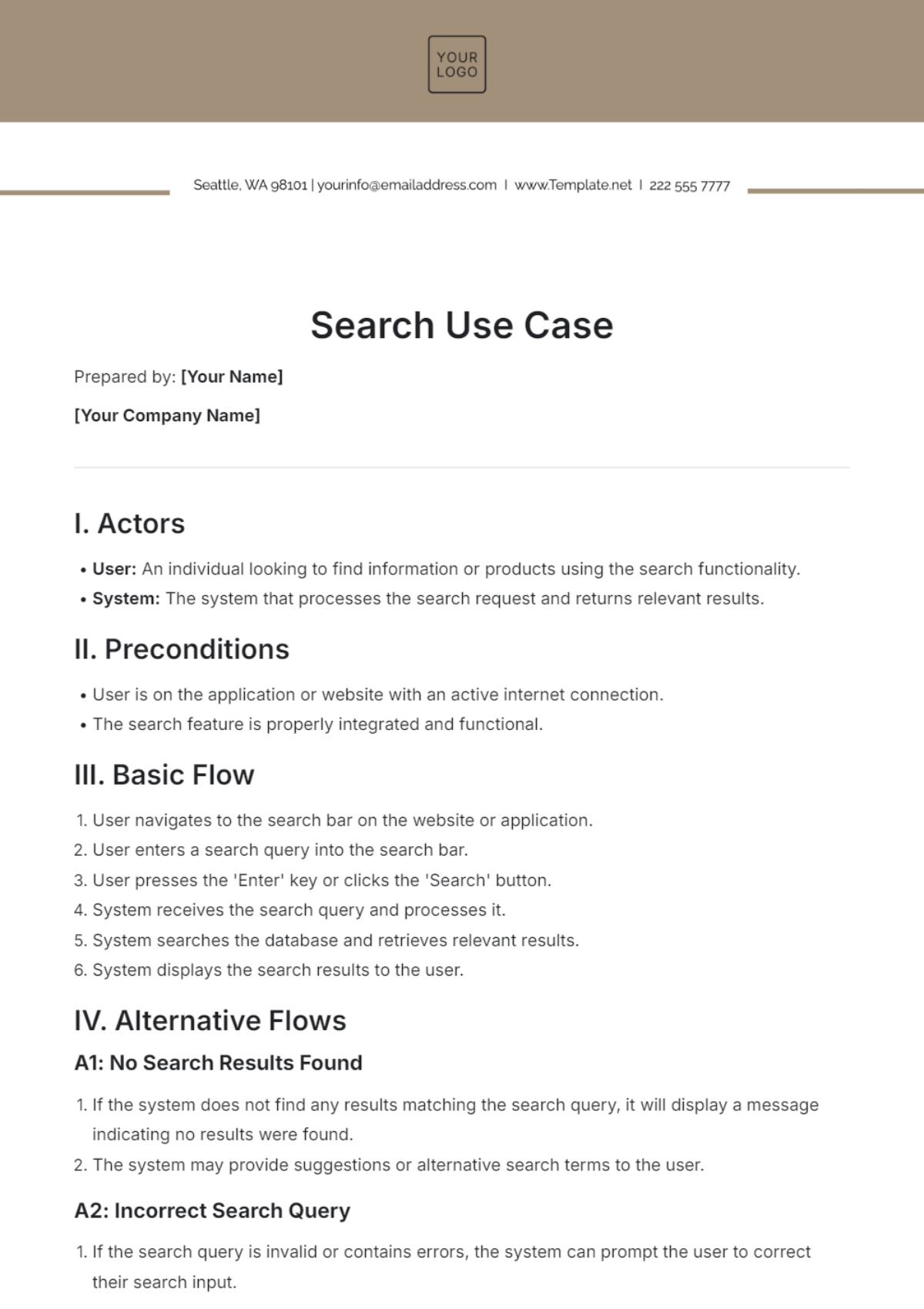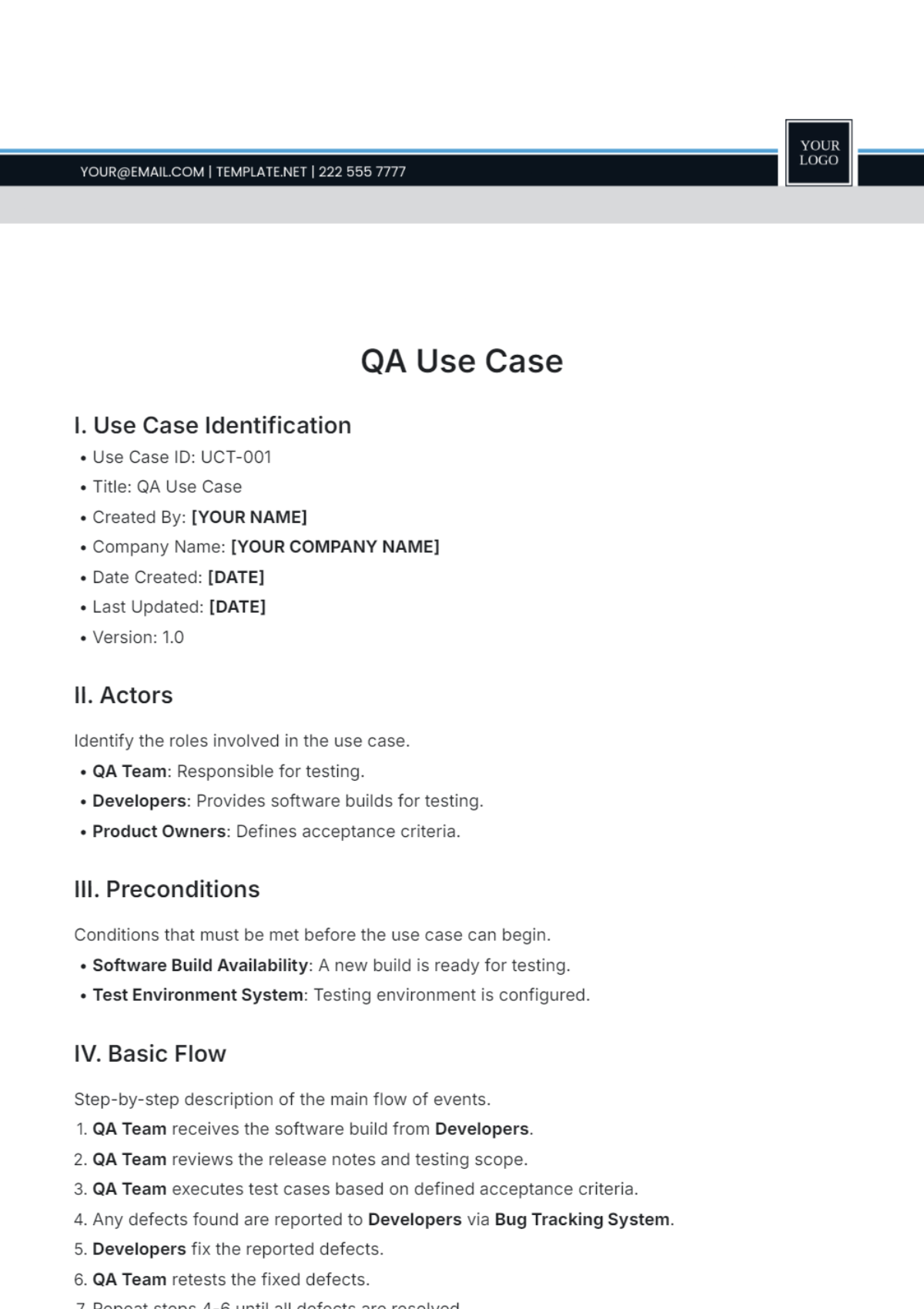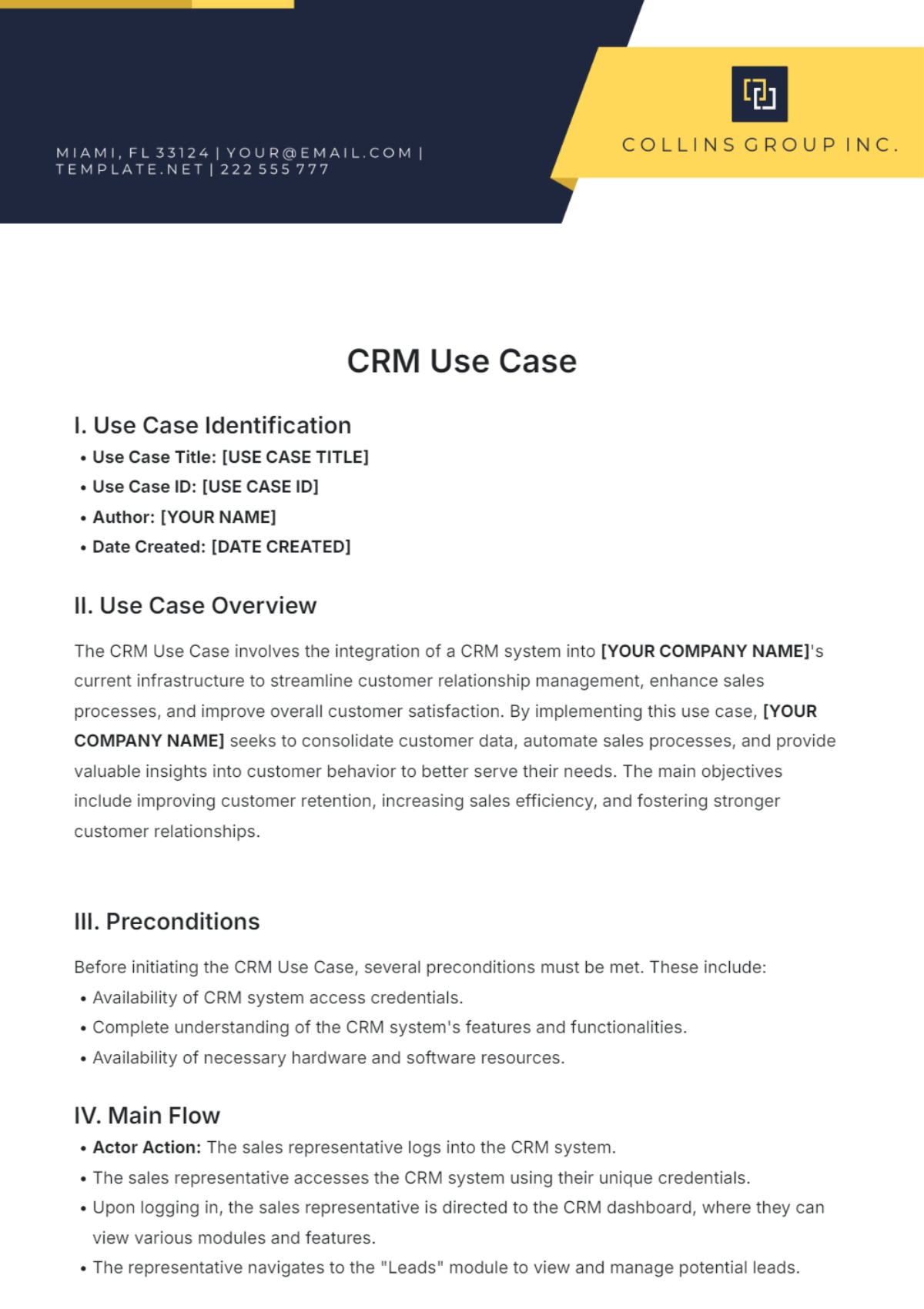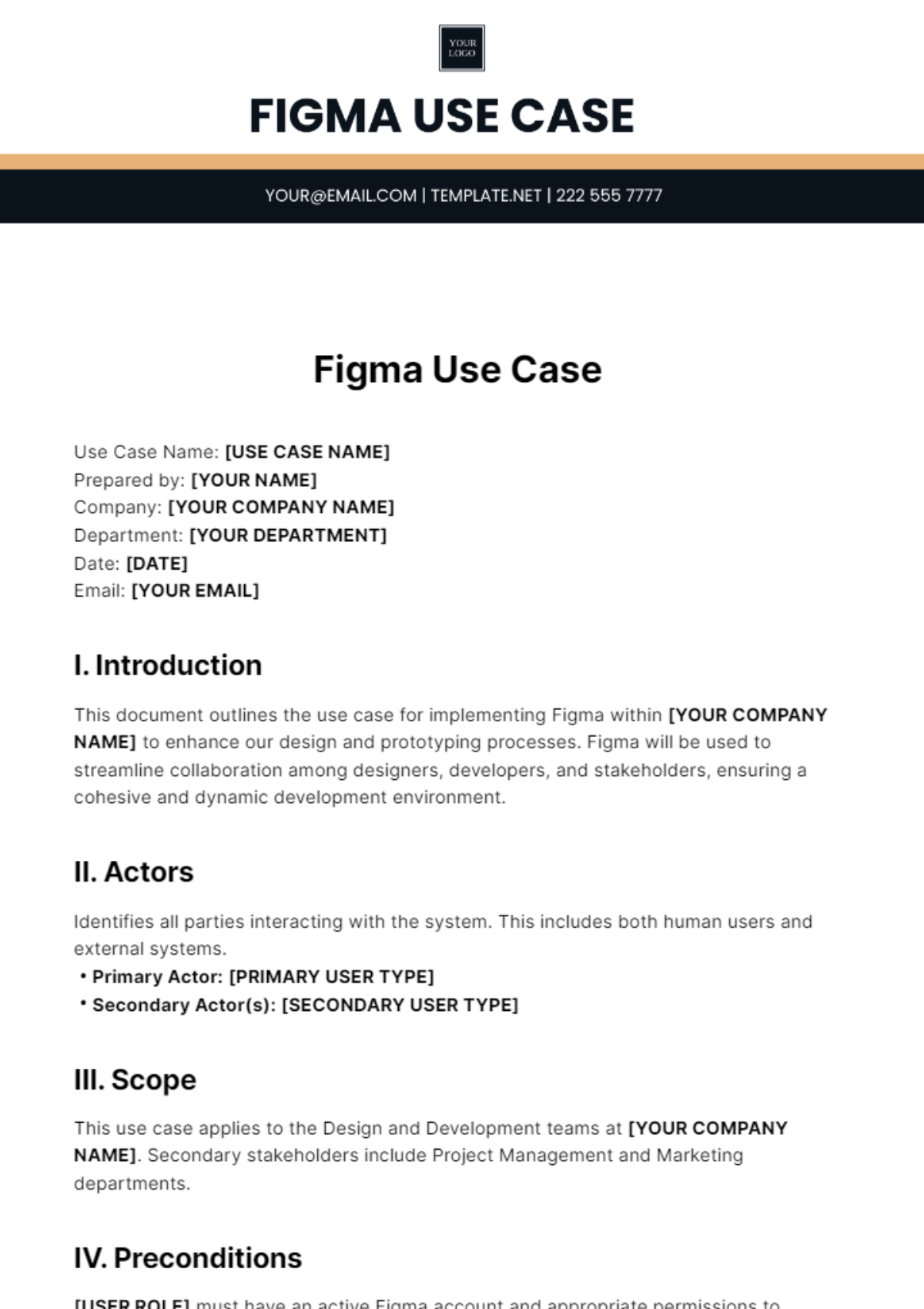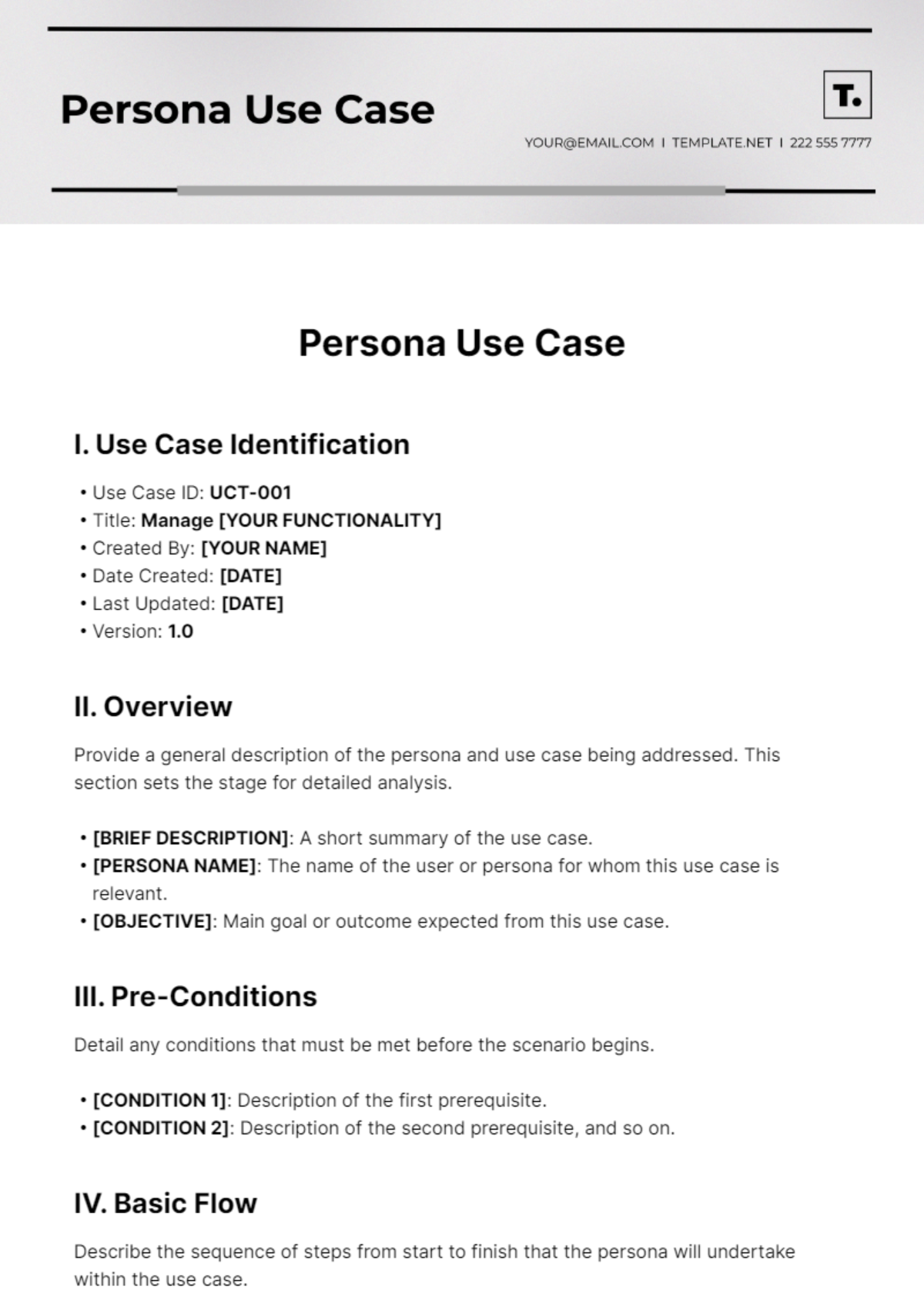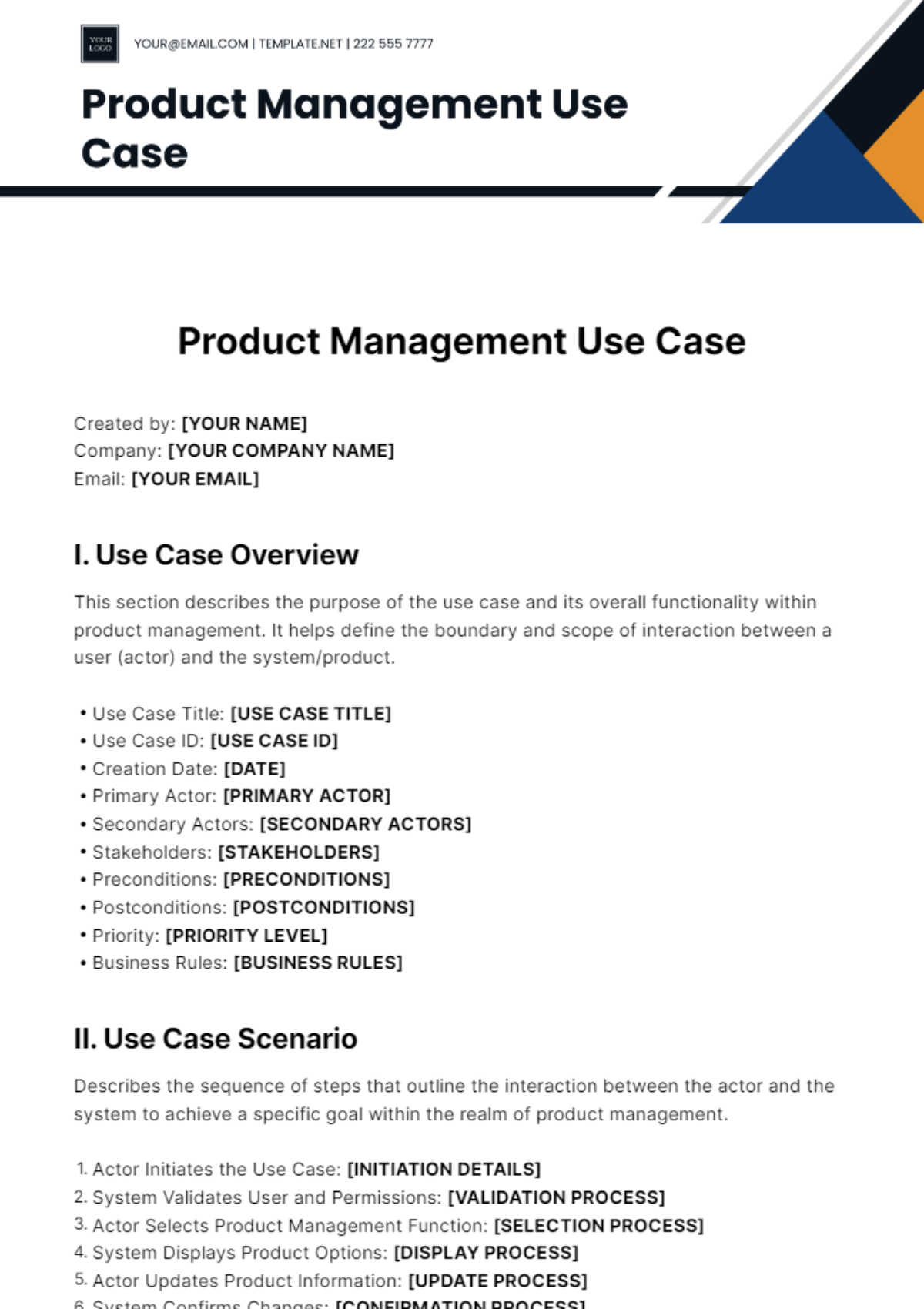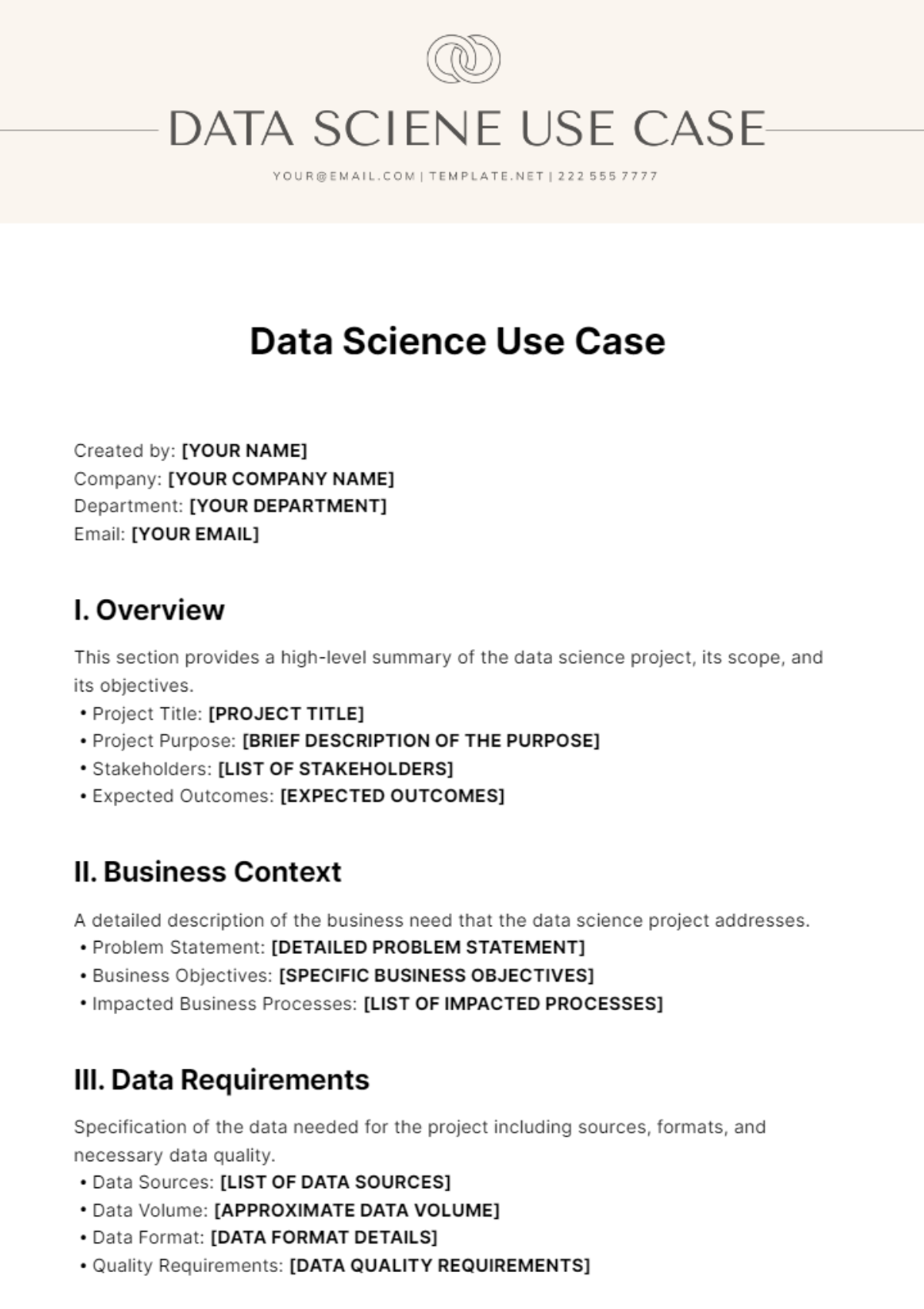One Page Use Case
I. Use Case Identification
Use Case ID: [UCT-001]
Title: [MANAGE INVENTORY]
Created By: [YOUR NAME]
Company Name: [YOUR COMPANY NAME]
Date Created: [DATE]
Last Updated: [DATE]
Version: [1.0]
II. Use Case Overview
Provide a brief description of the use case, including the primary goal or objective that this use case seeks to achieve.
Objective: [Specific Objective]
Scope: [Scope of the Use Case]
Initiation: [Initiating Condition or Event]
III. Actors
Identify all the actors involved in the use case and their roles.
Primary Actor: [Primary Actor Name]
Supporting Actors: [Supporting Actor Names]
System Actors: [System Actors]
IV. Pre-conditions
Enumerate all conditions that must be present before the use case can begin.
[Condition 1]
[Condition 2]
[Other Conditions]
V. Basic Flow of Events
Detail the sequential flow of the events that describe the standard operation of the use case.
[Event 1 Description]
[Event 2 Description]
[Further Events]
VI. Alternative Flows
Outline any alternative scenarios that deviate from the basic flow with corresponding branching conditions.
If [Condition], then [Alternative Event Actions].
Upon [Alternative Condition], [Consequent Actions] occur.
VII. Post-conditions
Describe the state of the system, user, and data after the use case concludes.
Outcome 1: [Outcome Description]
Outcome 2: [Outcome Description]
VIII. Exception Paths
List out scenarios in which errors or exceptions occur, and how the system should respond to them.
Error [Error Type] leads to [Response Action]
[Another Error Type]: [Corresponding Response]
IX. Business Rules
Detail any relevant business or domain rules that influence the decisions or flow in this use case.
Rule 1: [Business Rule Description]
Rule 2: [Further Rule Description]
X. Special Requirements
Identify any non-functional requirements or special conditions that need to be met by the use case.
Requirement 1: [Requirement Details]
Requirement 2: [Additional Requirements]
XI. Assumptions
List any assumptions that are made during the drafting of this use case which may affect implementation or understanding.
[Assumption 1]
[Assumption 2]
[Other Assumptions]
